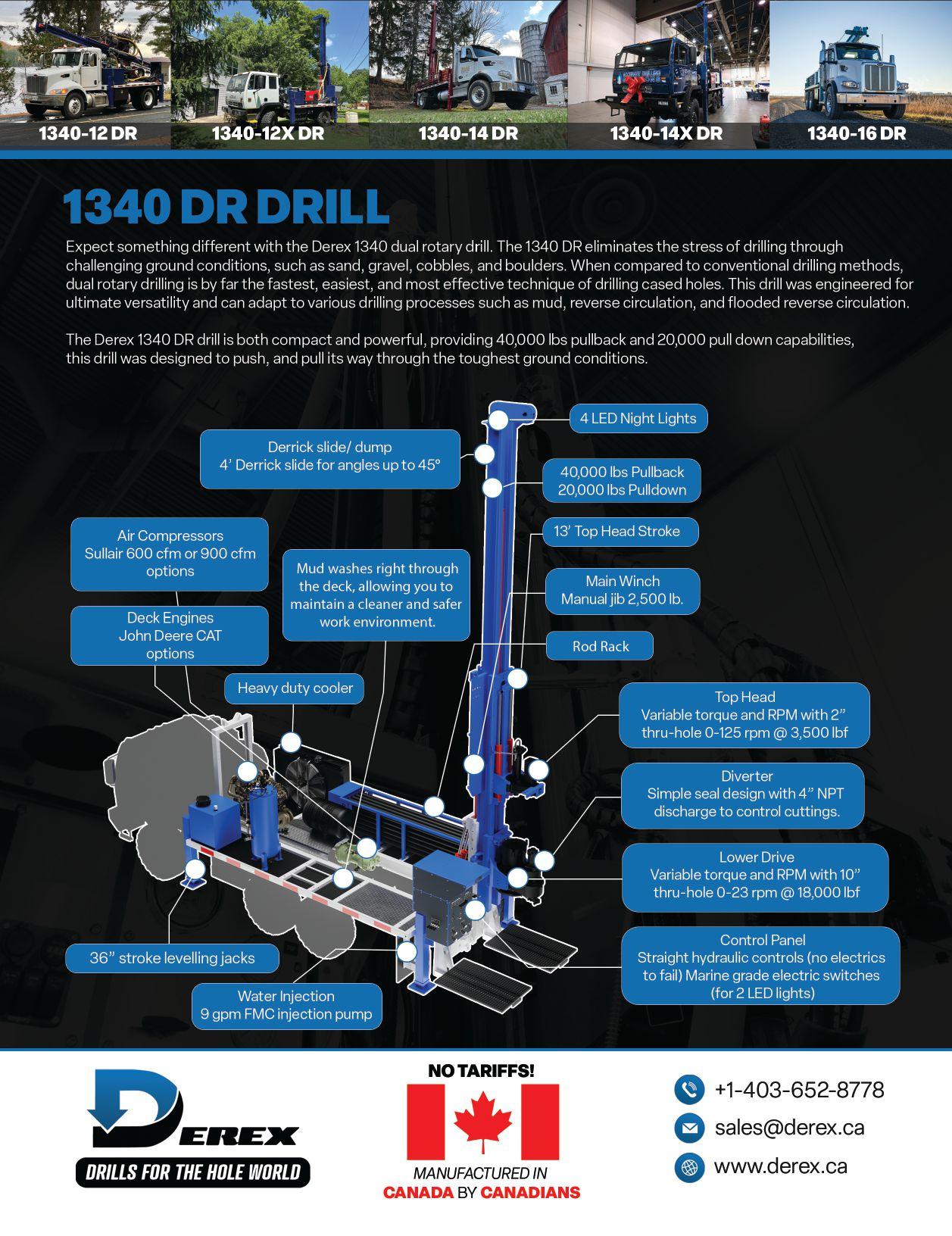
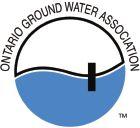
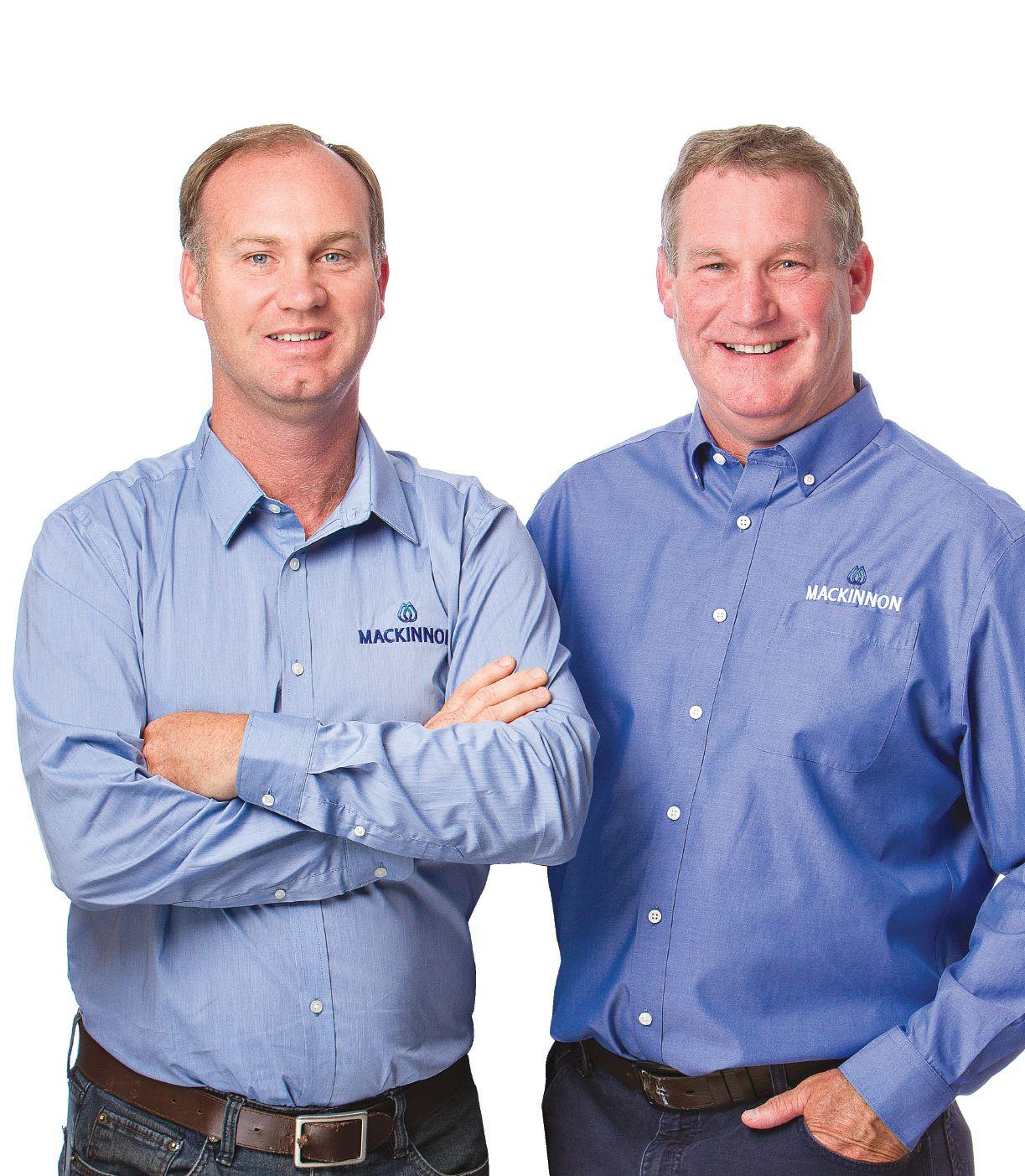




The power of a truck mounted drill on a carrier that goes where trucks can’t
Spindle torque rating up to 10,410 ft/lbs and 28,275 pounds of retract force for those deep auger borings.
Detent feed with adjustable pulldown pressure and rate controls for efficient core drilling operation.
Available optional equipment includes angle drilling, automatic SPT hammer, up to 6-5/8” capacity hydraulic rod holder and break-out wrench, cathead, water tank, a variety of hydraulic hoists, water pumps and much more.
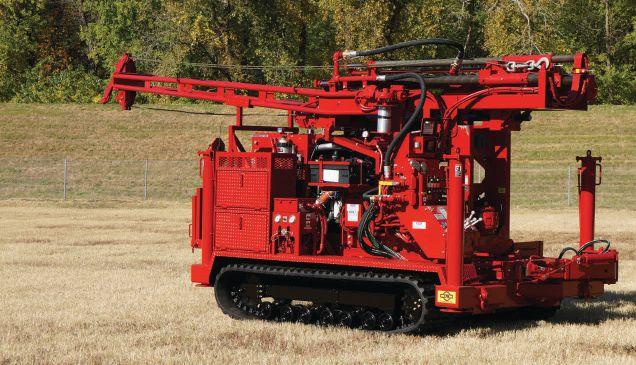
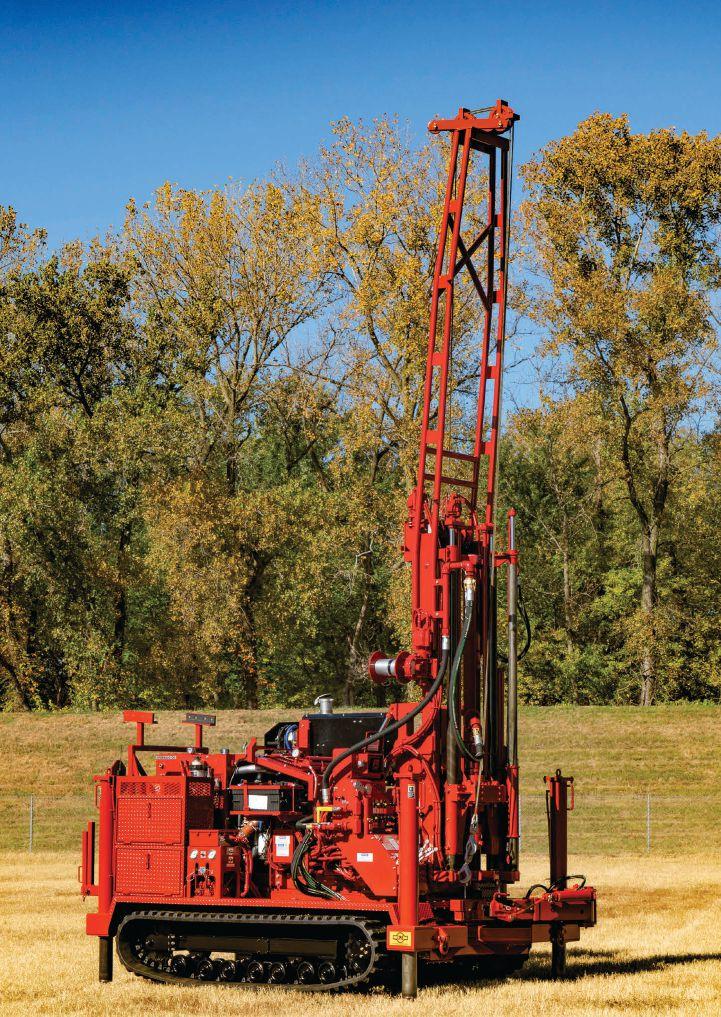
The CME-300 remote control driven, rubber track carrier is specifically designed and built by CME in our St. Louis factory. The walking beam suspension provides excellent stability when negotiating uneven terrain, whether it’s curbs in the city or logs in the forest. Couple that with a compact, low ground bearing pressure, zero turn carrier and now you’re getting to sites where your trucks can’t go.
Give us a call or visit our website to learn more about the advantages of the one-source CME-55/300 multipurpose rubber track drill.

Annex Business Media
P.O. Box 530, Simcoe, Ontario N3Y 4N5 (800) 265-2827 or (519) 429-3966
Fax: (519) 429-3094
Reader Service
Print and digital subscription inquiries or changes, please contact Customer Service Administrator | Angelita Potal
Tel: (416) 510-5113 | Fax: (416) 510-6875 apotal@annexbusinessmedia.com
Mail: 111 Gordon Baker Rd., Suite 400, Toronto, ON M2H 3R1
Editor | Mike Jiggens mjiggens@annexbusinessmedia.com (519) 429-5184
Advertising Manager | Sharon Kauk skauk@annexbusinessmedia.com (519) 429-5189
Account Coordinator | Melissa Gates mgates@annexbusinessmedia.com (416) 510-5217
Audience Development Manager | Shawn Arul sarul@annexbusinessmedia.com (416) 510-5181
Media Designer | Svetlana Avrutin savrutin@annexbusinessmedia.com
Group Publisher | Michelle Bertholet mbertholet@annexbusinessmedia.com
CEO | Scott Jamieson sjamieson@annexbusinessmedia.com
Publication Mail Agreement #40065710. RETURN UNDELIVERABLE CANADIAN ADDRESS TO CIRCULATION DEPARTMENT, P.O. BOX 530, SIMCOE, ON N3Y 4N5
e-mail: subscribe@groundwatercanada.com
Printed in Canada, All rights reserved. Editorial material is copyrighted. Permission to reprint may be granted on request. ISSN 0383-7920
Subscription Rates
Canada - 1 Year $21.42
U.S.A. - 1 Year $61.20 CDN
Annex Privacy Officer: Privacy@annexbusinessmedia.com Tel: 800-668-2374
Occasionally, Ground Water Canada will mail information on behalf of industry-related groups whose products and services we believe may be of interest to you. If you prefer not to receive this information, please contact our circulation department in any of the four ways listed above.
Serving the Canadian Ground Water industry for more than 50 years.
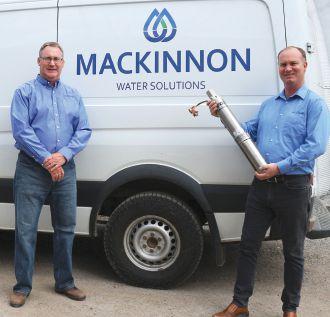
Rob and Jamie MacKinnon are Ground Water Canada’s ‘Distinguished Driller’ award winners
Walkerton, Ont. has moved on from the water tragedy of 25 years ago
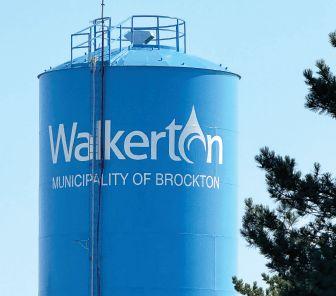
Well water may ‘taste great’ but could contain contaminants
News and views from the OGWA.

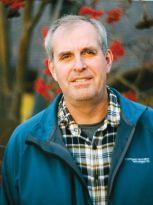
Water wells are running dry in Newfoundland amid hot summer season
Wells are running dry in parts of the province, and a veteran driller who has been drilling wells for 40 years said conditions are the driest he’s seen since the 1970s. He said that if the winter months don’t produce ample snow and rain, next year could be twice as bad. CBC News report Low groundwater levels in Quinte, Ont. spark urge for conservation during drought
Until groundwater levels have been recharged, residents of Quinte municipalities are being urged to reduce their water consumption. Belleville Intelligencer report
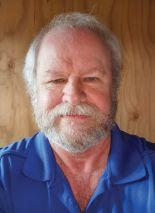
by Mike Jiggens
It’s been 25 years since the Town of Walkerton, Ont. was thrown into turmoil over a water crisis that claimed the lives of seven people and caused serious illness to about 2,000 others.
For the past quarter-century, the municipality has tried to move forward from the tragedy that made national headlines in 2000.
In this issue, author Carolyn Camilleri reflects on the events that led to Walkerton’s water crisis and the advances it has since made in the aftermath.
Among those she interviewed for her story was the municipality’s mayor, who spoke about a suggestion by two councillors who wanted to memorialize the anniversary in a significant way.
The suggestion was ultimately defeated by a vote of five to two. The town’s mayor, who was among those voting against the motion, said the general feeling in the community was that people wish to move on from what happened, noting anniversaries of this nature tend to be emotionally triggering.
Walkerton is continuing the healing process and is making progressive steps forward.
He suspected the vote of council was reflective of the townsfolk’s sentiments.
Perhaps it’s best not to erect some type of large-scale memorial, but it’s also important not to forget about what happened in the spring of 2000. We can’t forget about the Holocaust. We can’t forget about residential schools. We can’t forget about slavery. Forgetting about such things increases the chances of them being repeated.
Walkerton is continuing the healing process and is making progressive steps forward. The town’s mayor says he doesn’t want to dwell on bad memories.
The town’s drinking water supply, which had been tainted with E. coli, has long since returned to safe standards, yet there are still some residents who are apprehensive about ever drinking water from their taps again. The mayor isn’t one of them.
Everything is on the up and up again, and that’s been the case since the crisis was first realized. Nothing like this has – thankfully – happened elsewhere in Canada in the years since. It was an eye opener for water operations, and stronger safeguards for water protection can be found everywhere.
On the well drilling front, there are those who are doing their part to ensure their customers’ drinking water is as clean and safe as possible. Two such individuals have been honoured by Ground Water Canada as this year’s “Distinguished Driller” award winners.
Brothers Rob and Jamie MacKinnon, owners of MacKinnon Water Solutions in Pembroke, Ont., are profiled in this issue. Among their other achievements was the 2018 winning of the Ontario Ground Water Association’s Archie Watt Award, which recognizes excellence in sustaining groundwater resources.
MacKinnon’s Airwell technology has significantly helped improve the water quality for their customers by removing such gases as radon, methane and sulphur. One customer saw the removal of 124 parts per million of sulphur while another had its iron content reduced from 27 parts per million to only 1.5 parts per million.
Water system operators and well drillers are clearly doing their part to keep our water safe for consumption and to help avoid sickness. Of course, it’s the responsibility of well owners to have their wells tested to ensure their water isn’t compromised in the years after they’re drilled.
NEXT ISSUE: The next issue of Ground Water Canada will look at ways to keep groundwater clean in colder environments. Watch for it this winter. @GroundWaterMag groundwatercanada company/groundwatercanada


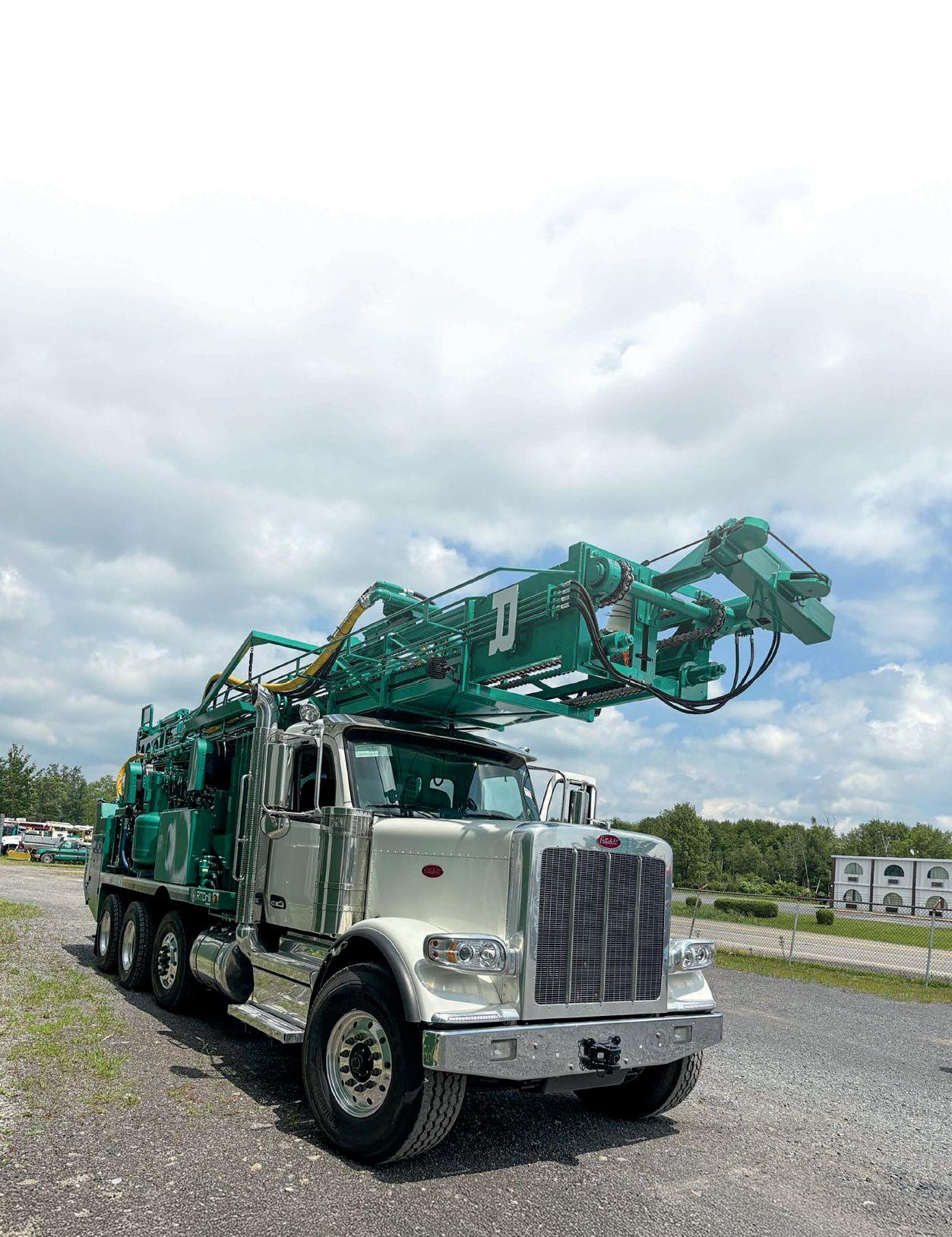
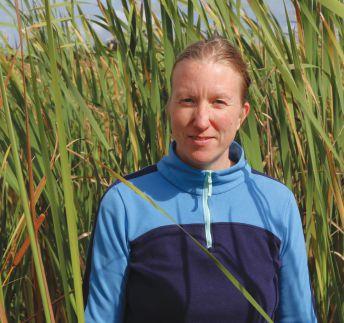
Agriculture and Agri-Food Canada research scientist Dr. Audrey Murray is spearheading a research project to explore water use efficiency.
What does an Alberta dairy farm and a Prince Edward Island research scientist have in common?
They both want to get moving on efficient water use. It’s all part of a new five-year research project with Agriculture and AgriFood Canada (AAFC) research scientist, Dr. Audrey Murray, in collaboration with researchers from the University of Alberta and the University of Waterloo in Ontario. The project is funded by Alberta Innovates and Results Driven Agricultural Research.
“I’ve always had an interest in water reuse,” Murray said. “Water is a limited resource, and drought conditions in Alberta have increased the need to improve water use efficiency. Certain natural climate solutions can provide many ecosystem benefits like high-quality water.”
Dairy farms often rely on irrigation to grow cattle feed. Water in southern Alberta runs from farm to farm through an extensive network of ditches.
Each farm has its own water-holding pond used for household and cattle needs, as well as for irrigating crops.
With drought and water shortages becoming more common in recent years, farmers have less water to use on crops as they prioritize water use toward cattle and household needs.
Farms in the region also have holding lagoons which store the
wastewater from dairy production, like milk house rinsing water, used bedding straw, manure, and more.
Currently, farmers mix the contents of the lagoon in the spring, to produce a nutrient-rich slurry that can be applied to crop fields as a natural fertilizer before planting.
Murray and her collaborators are studying a way to extract some of the wastewater from unstirred holding lagoons. This water can then be treated and used for irrigating crops throughout the growing season with a little engineering and a larger natural climate solution.
For several years, as part of Living Lab – Prince Edward Island, Murray studied constructed wetlands on farms to see how they can naturally filter water from farm field runoff before it enters receiving waterways such as rivers and streams. Wetlands also provide habitats for many species, such as plants, insects, amphibians, birds, waterfowl, and other wildlife. They can even help capture carbon and reduce greenhouse gas emissions.
Like cream mixed with milk, over time, wastewater in holding lagoons will also separate into layers – the top layer is thick and fatty, the bottom layer is where much of the solids settle, with the middle layer containing the cleanest liquid. It could be liquid gold, according to Murray, once Newton’s law can be applied to move the middle layer into a constructed wetland for further polishing.
“The ideal scenario is to build a wetland sightly downhill from the holding lagoon,” she said. “A pipe is placed into the right location of the holding lagoon, connecting it to the wetland, and then gravity does the rest. This engineering solution is very common in municipal wastewater treatment plants.”
Like a sewage treatment plant design, the effectiveness of farm wastewater treatment improves water quality with each additional stage – making it a numbers game where more steps lead
to better results. The holding lagoon provides pre-treatment through settling and anaerobic digestion, a natural process where microorganisms break down organic matter. The wetland continues to improve the water quality through physical and biological processes. A mixing pond will serve as the final treatment stage where treated water is diluted with clean pond water to meet quality standards, providing a supplementary irrigation source for irrigating crops.
Applying this unique concept to dairy farms is one that hasn’t been explored in Canada until now, and Murray is on the hunt for a volunteer farmer in Alberta to participate. But before the wetland and mixing pond can be constructed on a farm, she is creating a scaled-down model to prove the concept.
At the Harrington Research Farm on Prince Edward Island, Murray is building her own wastewater treatment plant on a much smaller scale by using mesocosms and wastewater from local dairy farmers. A mesocosm is a controlled outdoor experiment system designed to simulate a natural ecosystem, in this case.
Each mesocosm will be comprised of various wetland materials, such as various plants and soils, to see which ones are most effective in treating the wastewater. Other research results indicate that constructed wetlands paired with mixing ponds can effectively treat wastewater over periods ranging from approximately three days to two weeks, depending on environmental circumstances. Murray will test the output water quality from each mesocosm, as well as determine the ideal design concept, and cost for the entire system, before moving forward with the full-scale design in Alberta.
Once the project is finished, the team hopes to have a clear roadmap to help dairy farmers treat their own wastewater naturally and provide an extra irrigation source at a time when it’s most needed. Murray hopes that dairy farmers will soon be able to milk it for all it’s worth.



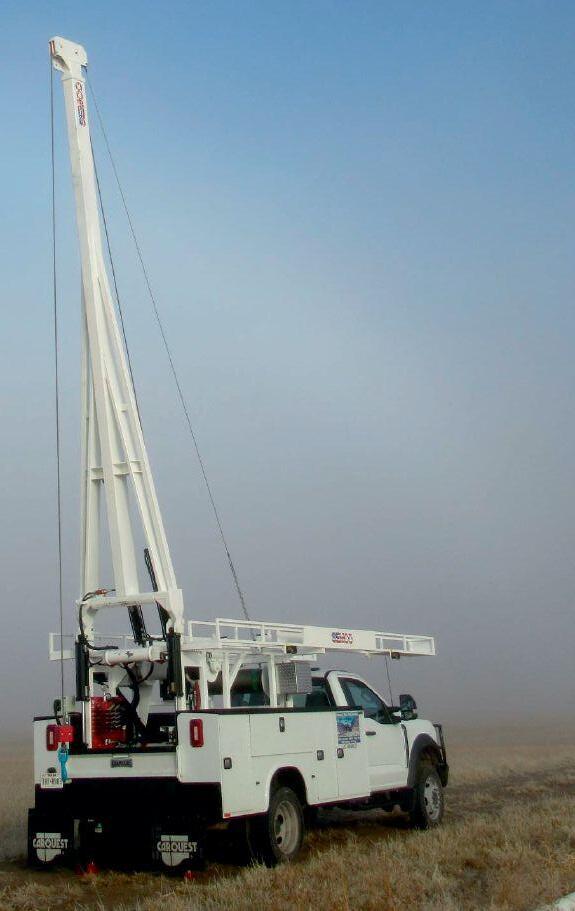



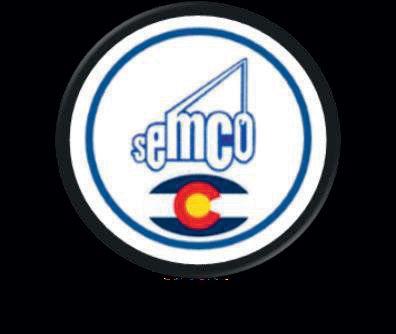




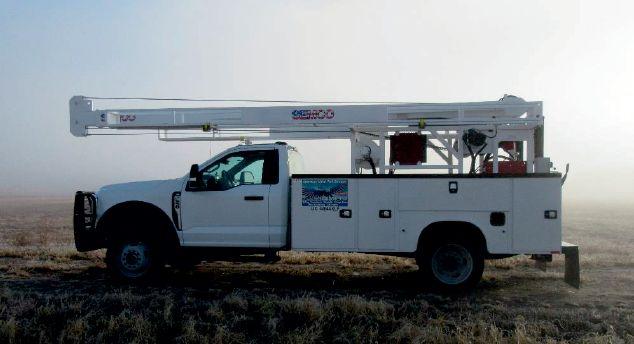
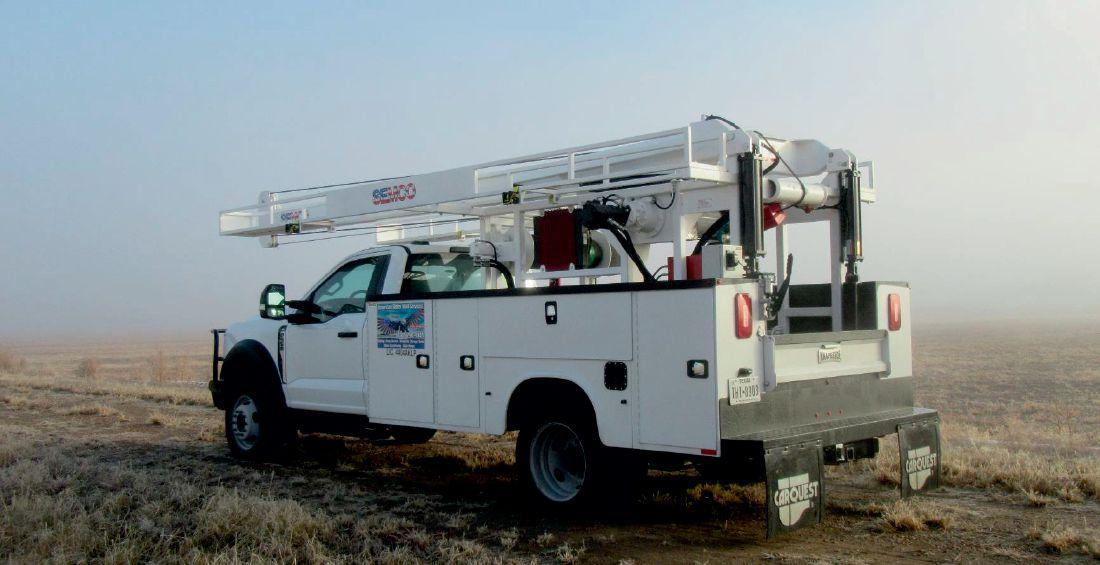


Abrother act from Pembroke, Ont. has been selected as the 2025 Ground Water Canada “Distinguished Driller” award winners.
Rob and Jamie MacKinnon are the second-generation owners of MacKinnon Water Solutions, having taken over the business their parents, Bill and Ann, founded in 1970. Rob, the elder of the two by three years, said he and his brother each have a 50 per cent stake in the company which they officially took over together in 2005.
by MIKE JIGGENS
MacKinnon Water Solutions had focused solely on drilling until 1993 when pump installation was added to the company’s services. Jamie joined the business that year – three years after Rob began upon completing two years of business study in college – and oversaw the pump installation part of the business. By 2013, the company had also ventured into water treatment.
“I found the whole scope of it very rewarding,” Jamie said. “The rewarding part would be… we drill a well, install a pump and do the water treatment, so, from start to finish, we’re involved with the same customer.”
MacKinnon Water Solutions’ clientele is mostly residential with few larger industrial projects. By offering a full range of services, it is much easier to diagnose well and pump problems or anything water treatment-related, Jamie said.
‘From start to finish, we’re involved with the same customer’
“From well to tap, we understand it all,” he said. Although based in Pembroke, MacKinnon Water Solutions added a new location in Sundridge, Ont. in 2020. The company also has a presence in Sault Ste. Marie. Its territory of service includes all of Renfrew County, the Muskoka region “and everywhere in between” and as far as Sudbury.
“Because there was a demand – one of the bigger drillers up there retired – we were having people call constantly, begging for us to go up,” Rob said.
“We thought at first, no, we’re not going that far, but people were in a real jam and there was lots of work up there. Without telling our guys, we asked them if they wanted to go, and they were interested.”
A team would venture into the northern regions for a couple of weeks, return to Sundridge for about a week, and go back up again.
In total, MacKinnon Water Solutions employs 20 people. Rob said the company has been lucky to find good drillers and employees, including one individual who has been with the business for 25 years.
“Oftentimes, we find somebody with good work habits,” he said. “We train them. We don’t necessarily look for drillers. Once we find a good person with a good work ethic, we train them, and they turn out to be the best employees.”
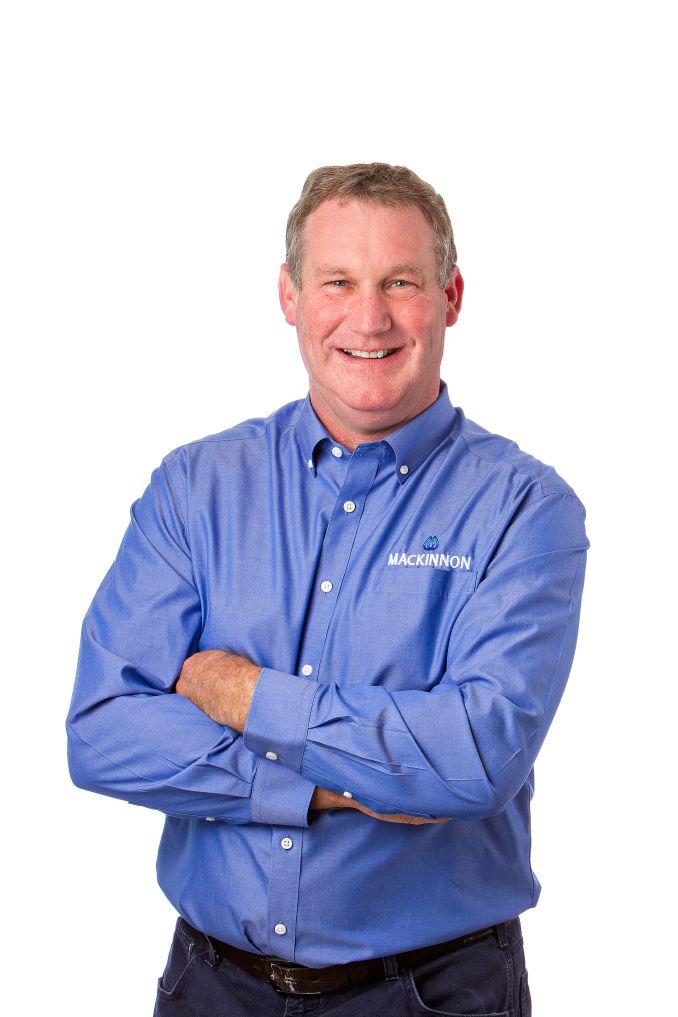
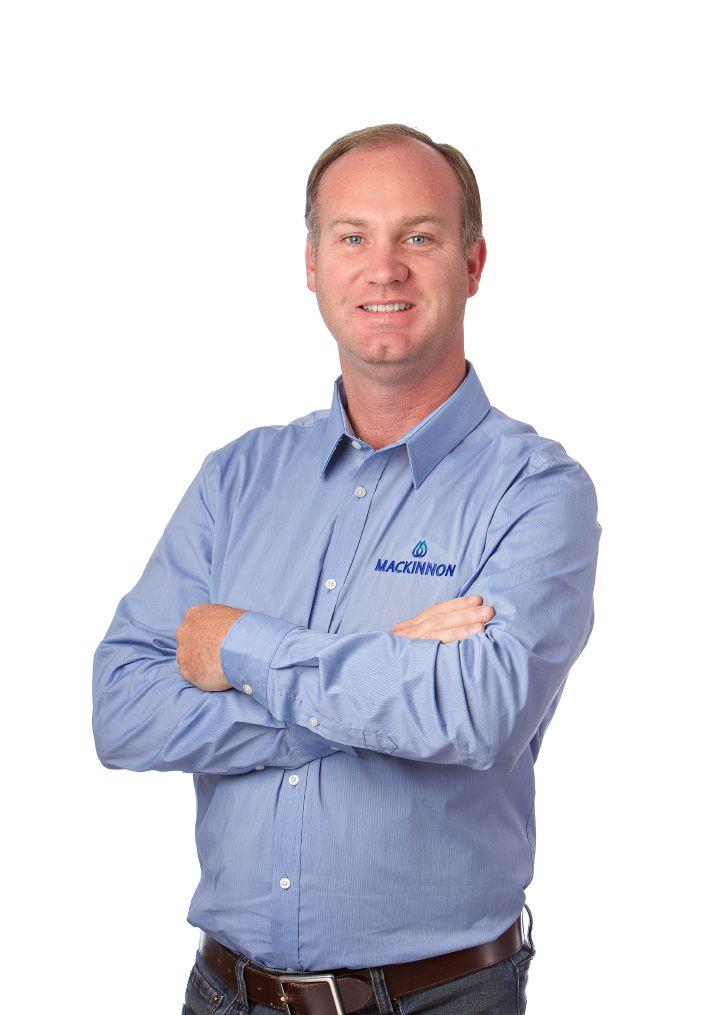
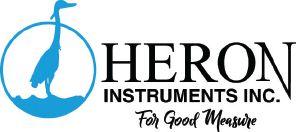
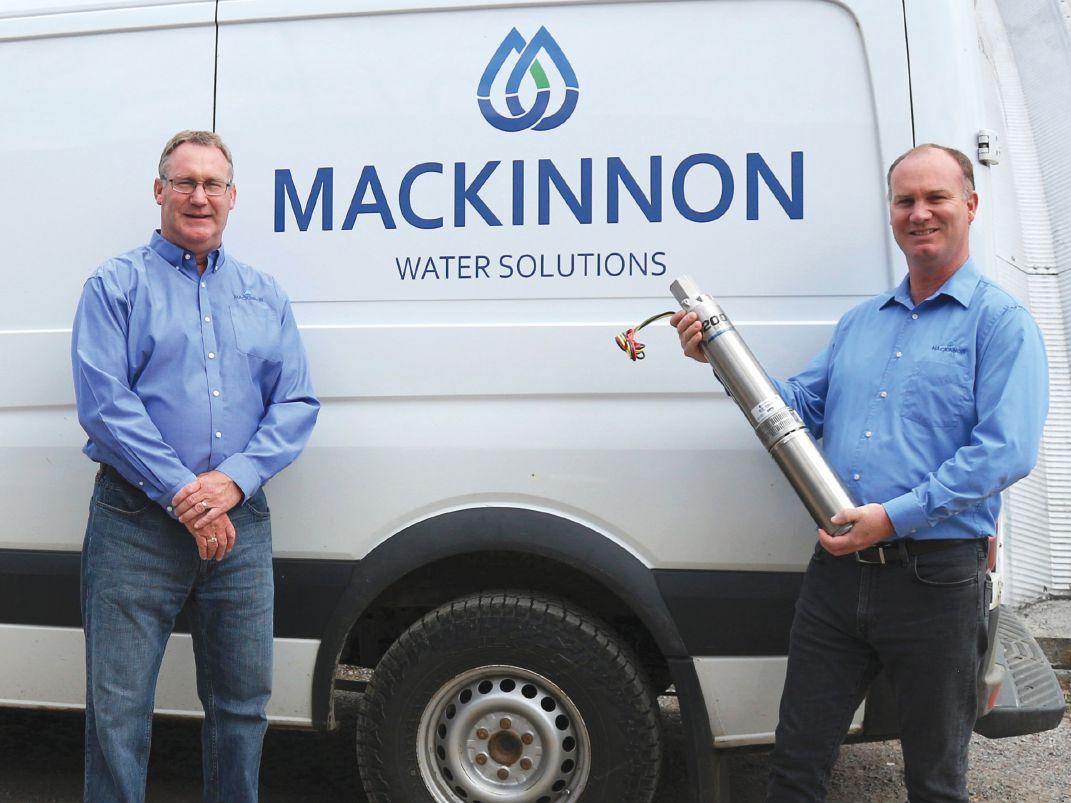
MacKinnon Water Solutions recently purchased new rigs, which Rob said has proven to be a good motivator for the company’s employees.
“We’re happy with the equipment we bought,” he said. “It minimizes downtime. It keeps the guys happy. Who doesn’t want to run a new rig?”
Many drillers are retiring and selling their equipment, Rob said, yet added that doesn’t necessarily mean careers in drilling are in jeopardy.
“There’s less drillers all the time and less companies,” he said. “I think the job is going to be more and more in demand.”
He suggested those contemplating a career in the industry acquire as much experience as possible in different
conditions to possibly become a driller’s helper by learning and asking good questions.
Rob said one of the challenges the industry has presented in recent years seemingly is an uptick in paperwork.
“There’s more of it every year,” he said. “I don’t know where it comes from, but there’s more of it every year.”
When faced with jobs in which the geology might be difficult or unknown, MacKinnon Water Solutions will conduct research through other well records.
“Our lead driller (Darren Ashick) has a saying that ‘what others call hell, we call home’,” he said. “It can be rough going in the Canadian Shield with various conditions. It’s just something that we’re used to.”
Jamie said it’s common to find high levels of contaminants in the regions where they drill which, although challenging, makes it interesting and rewarding.
“Where other companies have come in and walked away, maybe we’re stubborn and tend not to give up when we should, but we usually work with it, and we’ve done some neat work,” he said.
MacKinnon Water Solutions developed Airwell technology, a device it manufactures in Pembroke and sells throughout North America, which removes gases such as radon, methane and sulphur from wells. The technology was used to remove 124 parts per million of sulphur – “which is extreme
high levels,” Jamie said – at a job for a customer in Leamington. At another job closer to home, 27 parts per million of iron were removed, reducing the level to only 1.5 parts per million.
Rob said MacKinnon Water Solutions doesn’t typically drill open holes down for the grouting.
“We drill it down with a casing and then put the six-inch casing inside,” he said. “We like it because it’s safer. It doesn’t make a big hole out near the outriggers. More importantly for the drilling, you couldn’t screw up a grout job if you tried. It gives you a perfect annulus from six and five-eighths out to 10 and three-quarters, and there’s no stones to fall in and bugger it up. It’s a little more work, but it works well.”
In 2018, MacKinnon Water Solutions won the Ontario Ground Water Association’s Archie Watt award, recognizing excellence in sustaining groundwater resources.
“We’re happy with the equipment we bought, it minimizes downtime. It keeps the guys happy. Who doesn’t want to run a new rig?”
“It was a bit of a shock for us,” Rob said. “I think it might have had something to do with the Airwell and doing things a little differently and trying different things.”
Jamie said MacKinnon Water Solutions is a forward-thinking company that’s not set on a certain path but is more diversified. He added drilling customers tend to be better informed about wells
in recent years, due largely to readily available information on the internet.
“They can do their own research, and their questions are more pointed,” he said.
Still, MacKinnon’s customers are provided with a hard copy of a guide that provides answers to frequently asked questions.
Providing customers with constant pressure systems has been a major step forward over the past couple of decades. As more city residents seek to live in outlying areas, they have come to expect constant pressure.
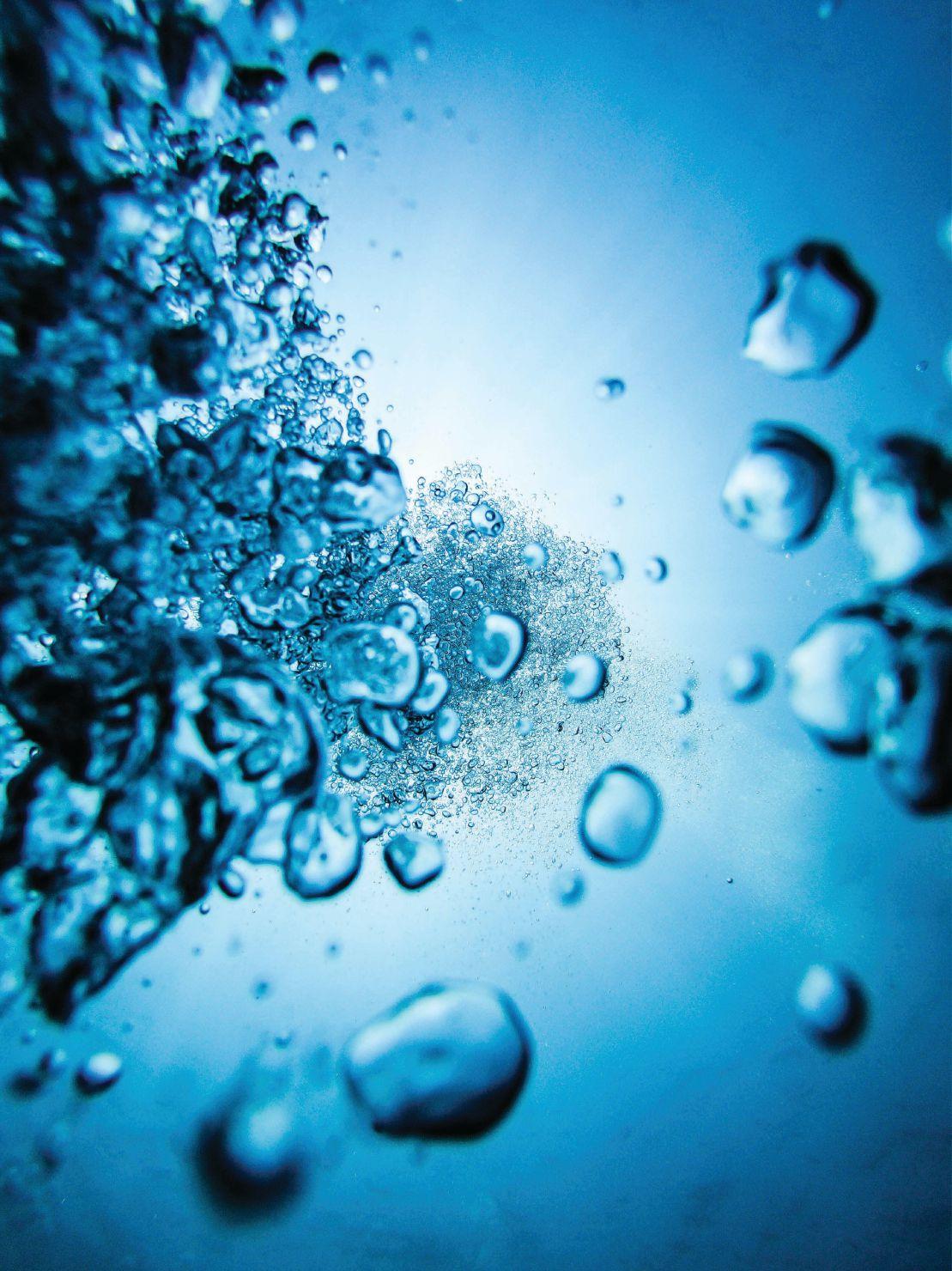
Rob credited MacKinnon’s employees for the company’s success over the years.
“We wouldn’t be able to do this without them,” he said. “They’ve all been a huge part of this.”
The MacKinnon brothers extended thanks to Franklin Electric and specifically to Rosemarie Ascherl Lenhard for nominating them for the “Distinguished Driller” award honour.
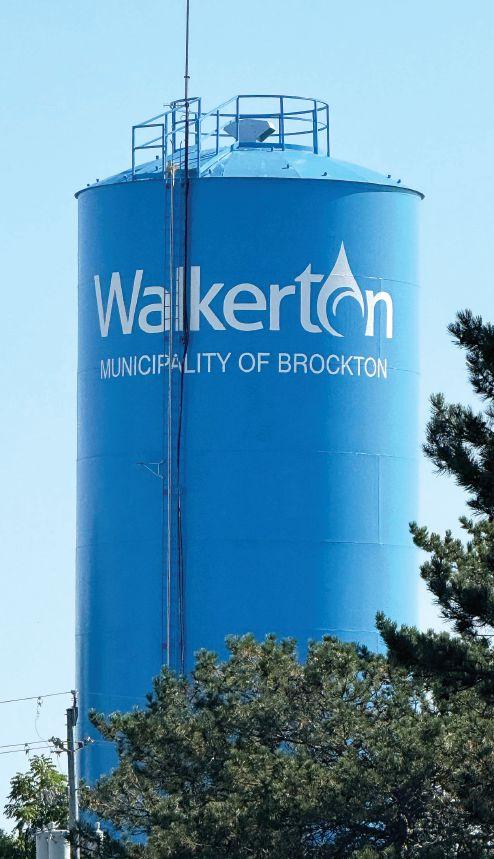
by Carolyn Camilleri
May 2025 marked the 25th anniversary of the Walkerton water crisis. Safe to say, anyone connected to the water industry in Canada has at least a basic knowledge of what happened in Walkerton, how it happened, and the tragedy it caused. While the lessons learned and the lives lost and affected should never be forgotten, the community of Walkerton is mostly ready to move on from it.
The Town of Walkerton is located on the Saugeen River in the Municipality of Brockton in Bruce County, Ontario. This past March and April, the municipal council discussed and debated how to mark 25 years since the Walkerton water crisis. Mayor Chris Peabody says the debate on council reflects the divisions in the town.
“Out of the seven, two councillors wanted really to do a largescale memorial for the 25th and the remaining five, including myself, we’re sensing that the townspeople are weary of this and would like to move on,” says Peabody, adding that for some townspeople, these anniversaries can be emotionally triggering.
“There are divisions on council and divisions in the town, but I think the percentage of the division is accurately reflected in the council vote of five to two against.”
What is well worth highlighting here is the resilience of the community. Peabody, who has lived there for more than 30 years, was first elected as a councillor in 2000 and has been mayor of the municipality since 2000. He says the town did not turn on itself through the conflict.
“When you’ve got relationships in a small town where everybody knows each other, it goes a long way when there is conflict that things don’t totally break down into strife,” he says. “I think that’s part of the resilience of a small town that you couldn’t get in a bigger community.”
Economically, Walkerton held steady in the years immediately following the crisis.
“We didn’t decline. The main street remained vibrant. But just in terms of population and growth, we did move sideways in the decade after, and it wasn’t really until 2018 that things started to pick up here,” says Peabody. “So as mayor, I’m reluctant to bring back those times and memories, and when we’re trying to, especially during that post-COVID boom, we were really trying to catch the wave, and we did. We had some really good growth.”
While Peabody says there are some townspeople who will probably never drink tap water again, the municipality actively engages the community in decisions around Walkerton’s water, which has been managed by Veolia Water Technologies since 2005.
“We’ve renewed their contract because we’re so happy with the work that the Veolia manager does on our water system,” he says.
The tragedy fuels the passion of our team and is embedded in our vision
Personally, Peabody says he has no apprehension drinking tap water anywhere in North America.
“I know how well it’s regulated and tested,” he says.
Peabody has studied water systems and considers rigorous education in drinking water a responsibility of governance. He also has a deep understanding of the Clean Water Act and Source Water Protection in Ontario, which he says are good pieces of legislation.
“One thing I have been impressed by, that’s stood the test of time, neither subsequent governments have changed
those pieces of legislation. They’ve stayed there,” he says. “You look at the Endangered Species Act, there was some changes with that just recently with Bill 5, but these two pieces of water legislation were untouched. I’m very vigilant on those two pieces of legislation, and they haven’t been touched yet. I certainly hope they won’t be.”
As for the community of Walkerton itself, they stuck together through a time of incredible strain and sorrow – and they are also moving forward together.
“We have bounced back,” says Peabody. “We were one of the few small towns in Canada to get the housing accelerator grant from the federal government – $3.4 million to incentivize builders to build affordable housing… We’re going to use that money to make sure we get some good growth. You never want too much growth, but you do need enough to keep your hospital and your high schools open. That’s really my goal
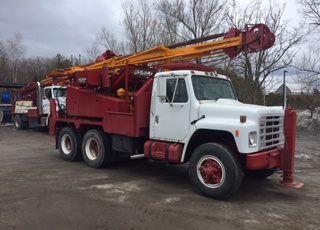


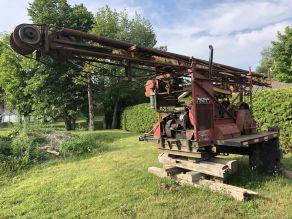

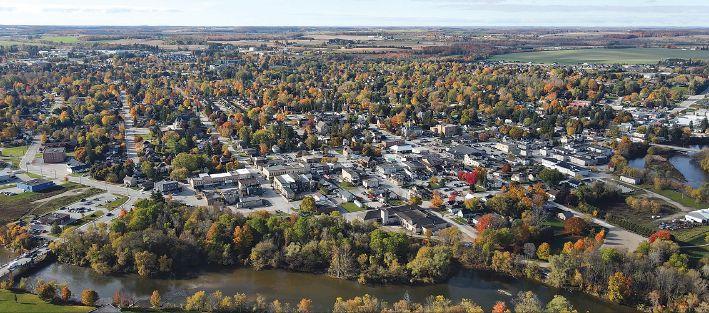
While the water crisis itself has become part of the history of the Walkerton community, the lessons learned have forever changed how we monitor and maintain water supplies. In addition to new legislation and policies on water protection and safety, another very positive result was the creation of the Walkerton Clean Water Centre (WCWC), an agency of the Government of Ontario.
“The Walkerton Clean Water Centre was created as a direct response to the Walkerton tragedy, and that history continues to shape and inspire our work every day,” says Brian Bates, WCWC’s CEO. “The tragedy fuels the passion of our team and is embedded in our vision: Clean safe water for everyone in Ontario It is not just a statement on our website – it’s a commitment to ensuring that the lessons of Walkerton are carried forward to every generation of drinking water professionals.”
Twenty-five years later, Bates says they honour the memory of those affected by committing themselves to ensuring it never happens again.
“Our training, piloting, and support services are grounded in that commitment,” he says.
WCWC works closely with drinking water operators, including those in small, rural, and Indigenous communities, to provide the practical skills and knowledge needed to produce safe drinking water to protect public health.
“The Clean Water Act is directly tied to the recommendations from the Walkerton
Inquiry, led by Justice Dennis O’Connor,” says Bates. “The most significant change was a shift from reaction to prevention. The Clean Water Act contains a framework for source water protection which requires municipalities to identify risks and develop plans to reduce or eliminate those risks.”
He adds that it also makes drinking water protection a shared responsibility and promotes collaboration among municipalities, conservation authorities, and the province’s Ministry of Environment, Conservation, and Parks.
Another key concept that came out of the Walkerton tragedy and was recommended in the Walkerton Inquiry is the “multi-barrier approach” to drinking water safety, which Bates says has become central to how drinking water is managed in Ontario today.
“The premise is that no single step can guarantee safe water on its own, so we put multiple barriers in place,” he says.
These barriers include source water protection, proper treatment, secure distribution, regular testing and monitoring, and effective response – all of which rely on well-trained operators. If one barrier fails, the others are there to prevent contamination from reaching the tap.
“The Clean Water Act focused heavily on strengthening the first barrier: protecting our sources of drinking water before contamination ever happens,” says Bates. “Well-trained operators and clear oversight are critical aspects identified by Justice Dennis O’Connor’s recommendations. In WCWC’s training,
we emphasize the multi-barrier approach, helping operators understand how each barrier plays a critical role in protecting public health.”
The training programs at WCWC are designed for drinking water operators, water systems owners, and anyone involved in managing drinking water systems that use groundwater and surface water, including operators that use both ground and surface water.
“We work with operators from large to small, urban to rural communities, but have a number of courses that have a particular focus on small systems, including those found in many Indigenous communities, where resources can be more limited and challenges more complex.”
Courses are available on everything from disinfection and microbiological sampling to troubleshooting distribution systems, managing treatment chemicals, and understanding emerging risks.
“The challenges operators face are varied and include things like aging infrastructure, limited staffing, tight budgets, and the impacts of climate change on source water quality,” says Bates. “WCWC’s role is to make sure operators and system owners have the practical knowledge, skills, and confidence to keep their communities’ drinking water safe, no matter the size or complexity of the system they operate or the source of their drinking water.”
In addition to providing training, WCWC conducts research. One of the key areas of focus at WCWC now is perand polyfluoroalkyl substances (PFAS), often referred to as “forever chemicals.”
“These substances are extremely persistent in the environment and have been detected in some groundwater sources across North America,” says Bates. “While Ontario has not yet established regulatory limits for PFAS in drinking water, Health Canada released an objective document for PFAS in 2024 and is currently reassessing the drinking water guideline. Many in the groundwater industry are watching this issue closely.”
WCWC is conducting bench-scale research on PFAS-treatment technologies
to better understand which approaches are most effective and practical for small and remote systems.
“We are also monitoring developments in regulations, treatment methods, and laboratory analysis so we can prepare Ontario’s operators, owners, and decisionmakers for what’s coming,” says Bates.
While PFAS chemicals are not yet formally regulated under Ontario’s Drinking Water Quality Standards, interim guidelines are in place and new federal objectives are driving further evaluation.
“WCWC’s goal is to ensure that when enforceable standards are introduced, our clients won’t be starting from scratch,” says Bates. “We want the groundwater community to know that WCWC is here to support them with practical training, pilot research, and information-sharing as PFAS continues to emerge as a priority issue.”
While many Canadians take clean drinking water for granted, it isn’t the case everywhere. Some rural, remote, and Indigenous communities continue to face significant challenges in ensuring access to clean, safe drinking water.
“To my knowledge, there are over 30 long-term drinking water advisories in effect in Indigenous communities across Canada,” says Bates. “While I can’t speak to the specifics behind each advisory, many are linked to factors like aging infrastructure, limited staffing, complex source water characteristics, challenges in accessing specialized training or technical support, or operational challenges.”
To support communities facing these challenges, WCWC is working hard to make training even more accessible with virtual training, eLearning, and hosting face-to-face in more remote locations.
safety as well,” he says. “It’s a shared responsibility, and WCWC offers training specifically designed to support those leadership roles as well.”
Bates says that groundwater professionals also play an essential role in protecting public health, often with limited resources and little public attention. He concludes his comments with a message for the groundwater community.
“As we navigate challenges like aging infrastructure, climate change, and emerging contaminants such as PFAS, your expertise and vigilance are more important than ever,” he says. “WCWC is committed to supporting you in your efforts. Whether through training, pilotscale research, or information sharing, WCWC is here to help you stay ahead of evolving risks and regulations.”
“We’ve recently completed Voice-ofCustomer research with a number of Indigenous communities in Ontario to better understand their needs in terms of training and services so that we can tailor our programs and services to be more relevant, practical, and responsive,” he says.
Bates adds that it isn’t all on the operators.
“System owners and decision-makers play an important role in drinking water

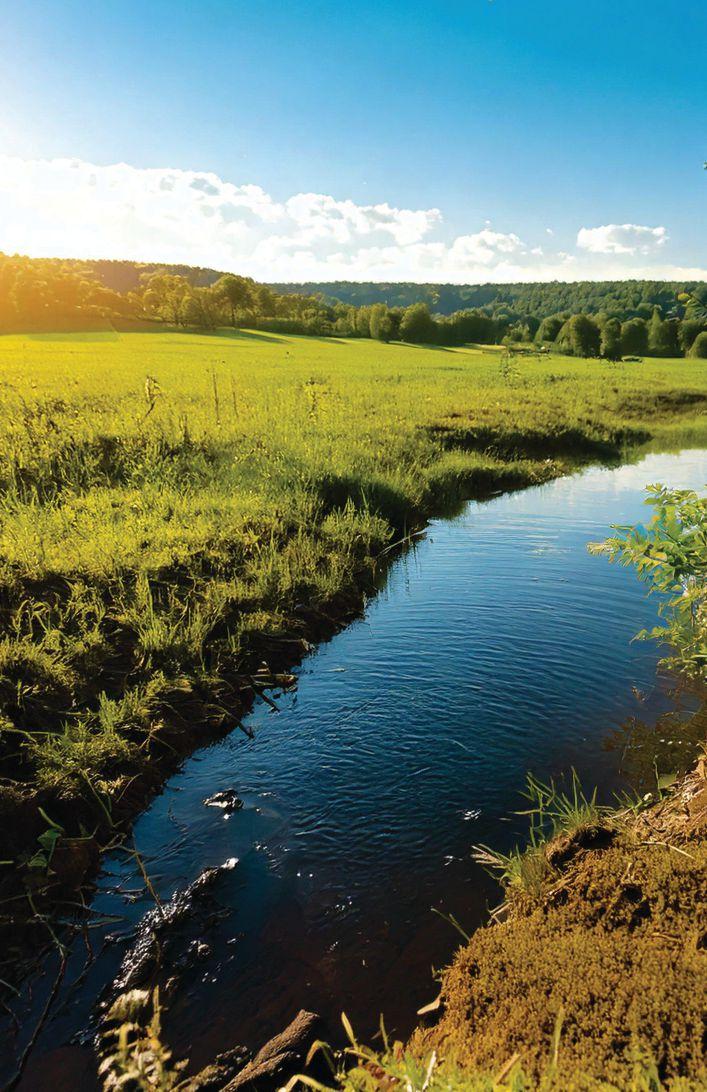

Homeowners with drilled wells often believe that a good initial test result combined with proper well depth guarantees that their water is free of bacterial contamination. This is only part of a much larger perception that water can be considered safe without further assessment or treatment. Consequently, when groundwater is blindly perceived as safe, additional testing is often not conducted to verify its suitability for drinking and household use.
by Jeff Wahl
A well water test can detect a variety of contaminants in drinking water.
A prominent societal belief is that water from a private groundwater source is inherently safe, especially if it was deemed acceptable in the past or if the surrounding environment appears undisturbed. For example, some people assume their well water is pristine simply because
previous generations never experienced issues, their well depth is considerable, or the water shows no outward signs of contamination.
In actuality, common characteristics of water contaminants are that they are generally colourless, tasteless, and undetectable to the human eye.
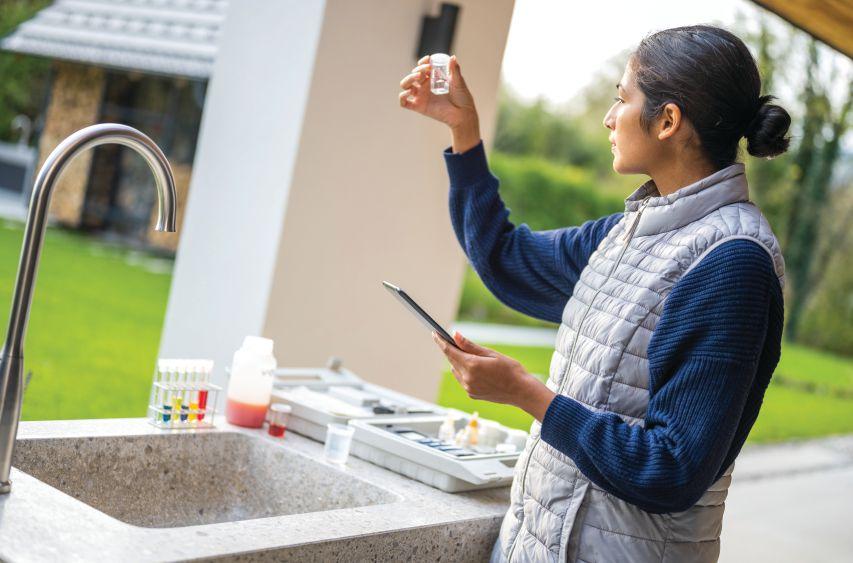
This often leads people to perceive the water as safe, allowing contaminants to go undetected if the source has no objectionable odours or tastes. A contaminant, regarding water, is generally defined as a polluting or poisonous substance that makes a water source impure. This can include any physical, chemical, biological, or radiological substance matter found in water.
It’s not possible to give an exact number of contaminants in Canadian groundwater sources because the number and types vary greatly by specific source, location, time of year, and local activities.
However, a common group of contaminants has been detected in groundwater sources. This includes E. coli and coliform bacteria, arsenic, mercury, nitrate, copper, per- and poly-fluoroalkyl substances (PFAS), trihalomethanes, lead, sodium, chemicals, microplastics, pharmaceuticals, and pesticides.
From this group, E. coli and coliform bacteria are the only two parameters
Many people perceive water as safe when they believe there’s little to no risk in their local area
that are tested for in a public health unit water sample.
Many people perceive water as safe when they believe there’s little to no risk in their local area. This perception, often held by people in rural areas, assumes that their groundwater would be safe because there are no nearby industries, farms, or other obvious sources of contamination. However, this belief overlooks the fact that underground aquifers are a network of fissures that can transport contaminants over great distances. As a result, a
well’s water quality can be affected by contamination sources that are far away from the property. Many contaminants, particularly bacteria, are not a constant presence. They can enter a well through an event like heavy rainfall, a nearby septic system overflow, or seasonal changes. A water test only provides a snapshot in time and is subject to change over time. It tells you the well water’s quality for the tested parameter only at the precise moment the sample was taken. The result doesn’t account for what might happen hours, days, or even weeks later.
The perception that “great tasting” water is safe has always been a powerful one, but it’s actually a dangerous misconception. Many of the most harmful contaminants are invisible and have no taste or odour, meaning you can’t rely on your senses to detect them. This false sense of security leads

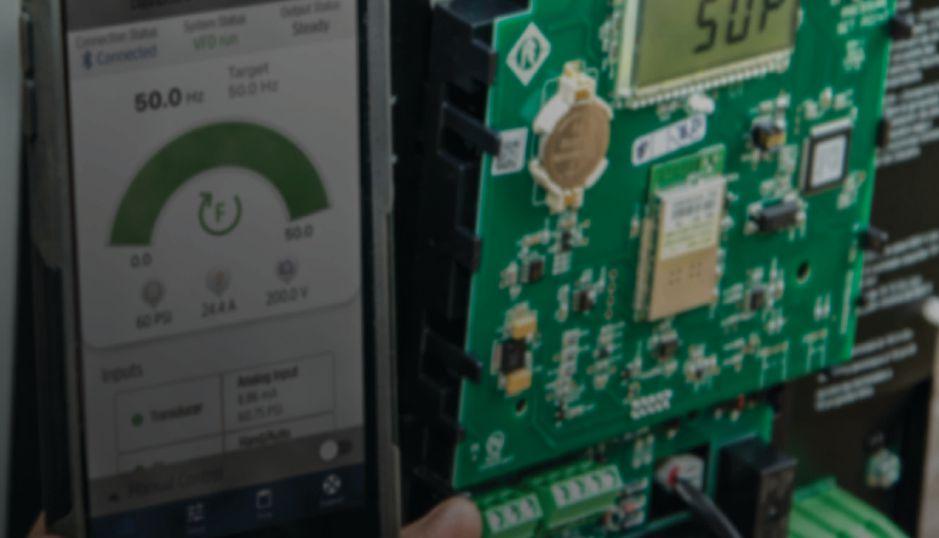
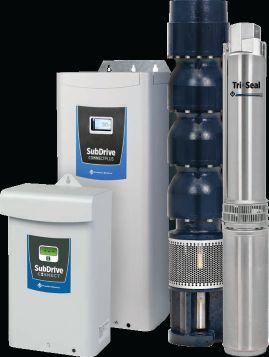
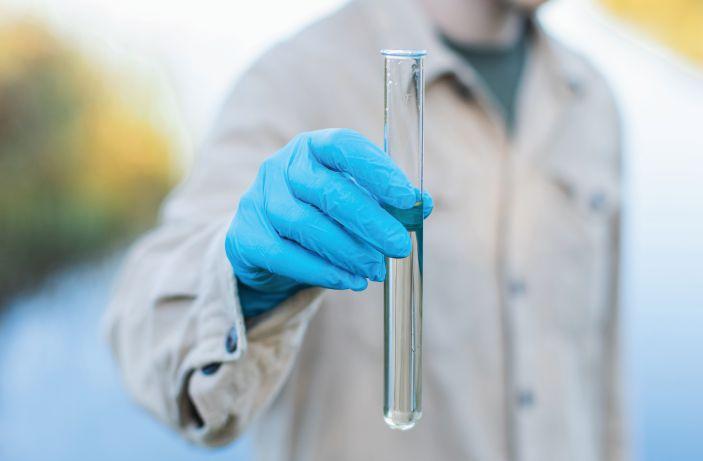
to an absence of proper testing and a misunderstanding of the actual risks posed by a contaminated water source.
The taste of well water is subjective to the person drinking it; it is influenced by a combination of individual sensory perception, personal experience, and the specific chemical composition of the water. What one person finds pleasant, another may find unappealing. The taste of water is not a reliable indicator of its overall safety and purity for drinking, yet it is often utilized as a means of determining water safety.
The perception can even be reinforced by a well driller during installation who, after a quick look, might reassure the owner that the water “looks great,” with no smell or colour.
A couple who moved from the city to a rural subdivision of about 60 homes on Manitoulin Island, Ontario, contacted me. All the homes in the area had water supplied by drilled wells and used septic systems for waste collection. A bacterial analysis for coliform and E. coli was performed as part of the house purchase, but no other testing was conducted as the results were negative for bacterial contamination at the time of the sale.
The home had no water treatment equipment at the time of purchase. Although the water was odourless
and colourless, they were concerned. Additional water sampling was conducted, and the total dissolved solids (TDS) level was determined to be 1,258 ppm.
This was largely a result of the 54 grains of hardness also present in the water. Both values greatly exceeded the recommended levels outlined in the Canadian Drinking Water Quality Guidelines. However, the water showed no visual signs of contamination exceeding the acceptable levels outlined in the drinking water guidelines.
A common belief is that deep water sources, specifically drilled wells extending 100 feet or more, are immune to bacterial or contaminant contamination as they are thought to be “too deep” for microbial survival. This assumption often discourages well owners from conducting regular testing. However, geological formations, (primarily in rocky areas) may contain a network of deep fissures and fractures. These natural pathways allow contaminated surface water to infiltrate deep into the ground and reach the water table feeding these “deep water sources.” The presence of bacteria has been observed in wells as deep as 200 feet, underscoring that depth alone is not a guarantee of bacterial purity.
Soil acts as a natural filter for water
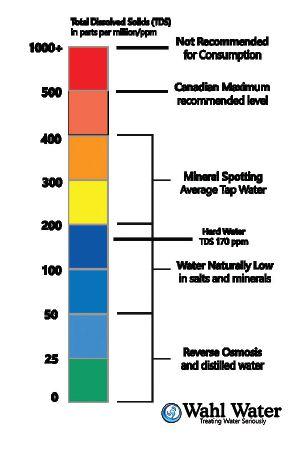
quality in drilled wells through a combination of physical, chemical, and biological processes as water slowly moves downward through its layers. This natural filtration is a key reason why groundwater, which supplies drilled wells, is often cleaner than surface water. While soil is an effective filter, not all geological formations are. In areas with fractured limestone or other porous bedrock, water can bypass the soil layers and flow directly to the water table, carrying contaminants with it. This is why regular water testing is still essential for all wells, regardless of depth or location.
In Canada, approximately 30.3 per cent of the population, or 8.9 million people, rely on groundwater for domestic use. Health Canada has identified more than 80 harmful substances commonly found in drinking water. While by no means comprehensive, this list includes items such as micro-organisms and bacteria, pesticides, heavy metals, petroleum by-products, and radioactive materials. Proper water testing with a licensed laboratory is the best practice to ensure water contaminants are identified and addressed with proper treatment to provide safe water from a groundwater source.
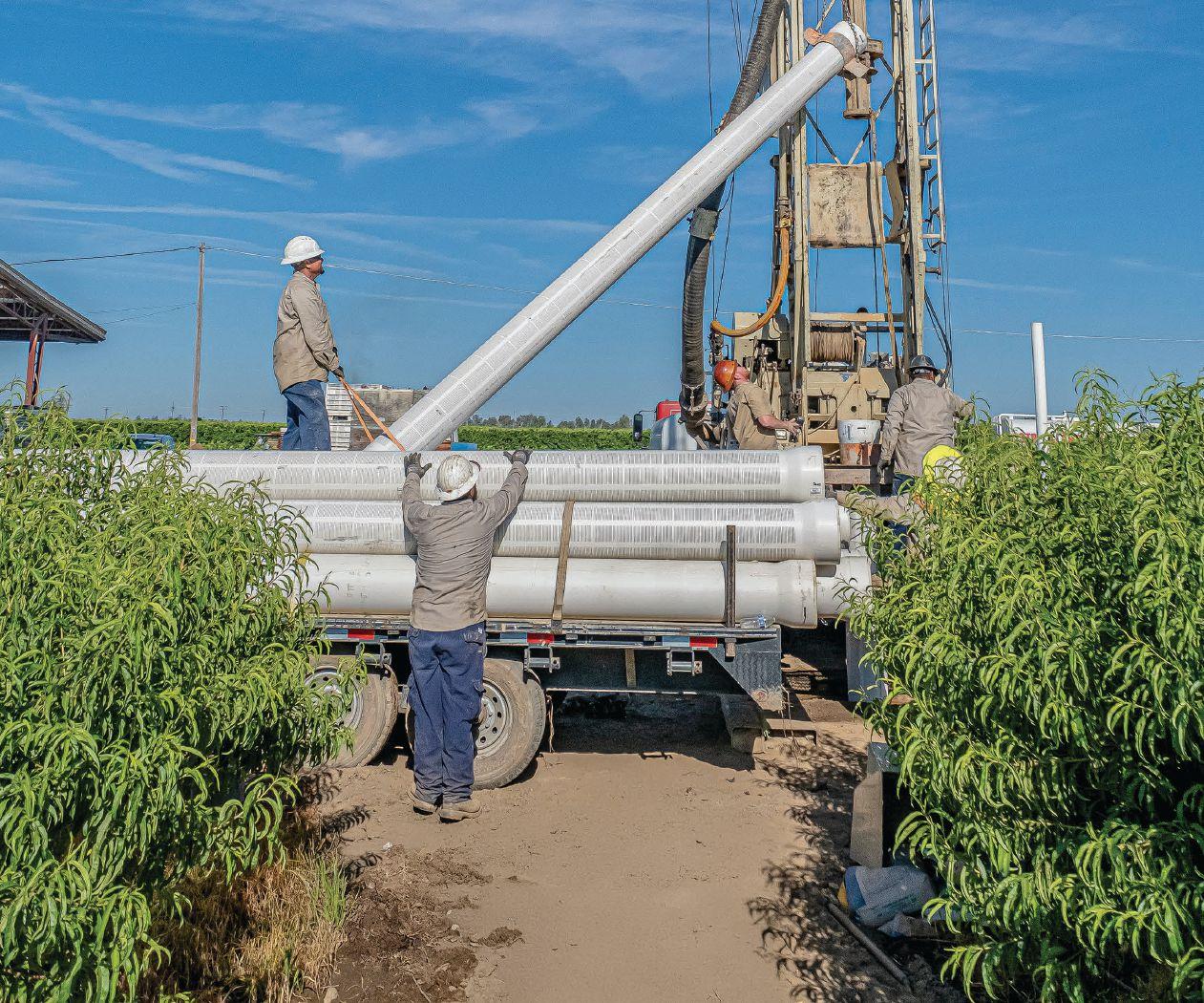
Westlake Pipe & Fittings is the name that contractors have come to associate with the industry’s broadest line of high-quality PVC water well products, including the durable Certa-Lok® Slotted PVC Well Casing. Our slotted casing is produced with open areas and efficiencies that rival those of other screens, often at a fraction of the cost.
Slotted casing is produced in sizes 2” up to 17.4” O.D., and field fabrication is not required. Combine PVC screens with PVC well casing and drop pipe for the ultimate corrosion-resistant, low-maintenance water well.

Learn more at westlakepipe.com/gc © 2025 Westlake Pipe & Fittings. All rights reserved.
Dear OGWA Members,
As we move through another HOT! and busy summer season, I want to take a moment to update you on some of the critical issues your Board of Directors has been actively engaged in. We are facing both challenges and opportunities that will shape the future of our industry, and I’m proud to say that the OGWA continues to meet them head-on.
One issue in particular has demanded close attention from the Board – a situation involving a Ministry of the Environment, Conservation and Parks (MECP) order related to a residential well installation. While the specifics are still unfolding, the broader concern is clear: how best management practices are interpreted and enforced in the field.
The OGWA believes it is essential that regulatory expectations align with both science and the realities of groundwater work in Ontario. We are actively involved in this matter, advocating for a fair and reasonable approach that protects both water resources and the professionals who work to develop and maintain them. We will continue to keep you informed as the situation develops.
In the meantime, I encourage all members to continue keeping detailed and accurate well records – an essential part of protecting your work and maintaining compliance.
In more positive news, the MECP has released its Draft Procedure for the
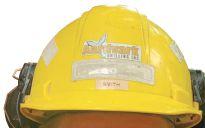
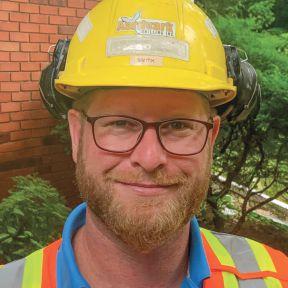
KYLE SMITH President
Disinfection of Municipal Drinking Water Wells, now open for public comment until September 19, 2025. We’re pleased to share that several OGWA members were invited to contribute to this consultation process. Their involvement reflects the growing recognition of our industry’s expertise and experience.
This is an important opportunity to help shape clear, practical, and science-based guidance. I urge all members to review the draft and submit comments. Your voice matters.
We’re also addressing a growing labour crisis. With nearly half of our membership nearing retirement, the shortage of trained technicians and drillers is becoming critical. The future of our businesses – and of safe, reliable drilling and water well services in Ontario – depends on bringing new people into the trade.
That’s why the OGWA is working on strategic outreach and partnerships with the Ministry of Trades and Education to promote
careers in groundwater. This is not a quick fix, but we’re committed to laying the foundation for long-term solutions that support your businesses and our industry. Engagement is key. We often operate on sites away from the public eye. I encourage you to take part in local events like water festivals, touch a truck events and others like mighty machines showcases. If the young public has a chance to see what we do, they may seek careers in groundwater. It’s also an excellent way to promote your business.
These are complex times, but I remain optimistic. With a strong, united membership and a Board that is dedicated and engaged, the OGWA is well-positioned to advocate for you, support you, and move our industry forward.
Thank you for your continued trust and commitment.
Sincerely,
KYLE SMITH, President, Ontario Ground Water Association
HEALTH & SAFETY REPORT Updates for OGWA members
3 CRITICAL ATTRIBUTES of Using or Selling Substandard Products and Using Substandard
DRIVING EDUCATION FORWARD OGWA Scholarship Golf Tournament
OLD WATER
Have You Tasted Your Well Water?
PUBLISHED FOR THE
ONTARIO GROUND
WATER ASSOCIATION
Ph: 519-245-7194
TRISH LUTY, General Manager Ext. 1 / trish@ogwa.ca
DEBBIE STOJKOVIC, Accounts Ext. 2 / accounts@ogwa.ca
EXECUTIVE
KYLE SMITH President
STEPHEN BLEIZEFFER Vice President
BOYD BENDLETON Treasurer
MATT WILSON Secretary
DWAYNE GRAFF Past President
DIRECTORS
STEPHEN BLEIZEFFER BrokerLink Inc.
519-579-3330
RACHEL BOURNE
Elements Geo Corp. 289-927-4078
DWAYNE GRAFF Well Initiatives Ltd. 519-846-8289
JAMES DENNIS CanPipe 613-930-5595
BRUCE HIETKAMP Geo Kamp Limited 905-825-8007
SHAWN HOPPER
SD Hopper Drilling 519-272-5490 (cell)
MIKE MINOR Franklin Electric 437-240-3179
HARRY OUSSOREN Institu Contractors 519-763-0770
BOYD PENDLETON Lotowater Technical Services Inc. 519-442-2086
RICK PETTIT Rideau Supply 800-463-7648
KYLE SMITH
Aardvark Drilling Inc. 613-296-8779
MIKE STEFFEN Steffen Well Drilling 519-357-1960 / 519-531-0355
BRYAN WATSON G. Hart & Sons Well Drilling Ltd. 705-887-3331
MATTHEW D. WILSON
J.B. Wilson & Son Well Drilling ltd. 519-269-3364
IAN GAWEL
Desjardins Financial Security Independent Network 647-285-1390 416-695-1713 (fax)
Hello OGWA members!
As summer draws to a close, I do hope that you are all well. Per usual, I have a couple of updates for you!
1. The WSIB strike is now over! There will be a second WSIB SURPLUS Rebate coming to you, however, the timeline has not been shared yet (I’m thinking Sept/Oct. 2025). This is to offset the tariffs and to help you stay in business. Please make sure you check your WSIB Account to see how much you will receive. If your account is in poor standing, the Rebate will be allocated to the monies that you owe the WSIB. There is information on this link if you wish to receive a cheque: https://www.wsib.ca/en/rebate
2. If need any WSIB Form 82s (The in Case of Injury Poster) in other languages, please let me know. There is a requirement to have this posted in the workplace!
3. The WSIB Excellence program is still here, offering Rebates to members who participate. If you are interested in getting a) up to double your annual premiums back OR b) $2,000 per topic, up to 5 topics (yes, that’s $10,000), then please contact me! Each business will now receive $1,000 to offset provider fees in addition to the Rebates!
4. A reminder on Narcan (Naloxone) kits – required if there is a risk of an opioid overdose and, yes, you need training on how to use the Kit.
5. New Regulation 480/24 coming into effect for January 1, 2026 re: records of cleaning for washroom facilities, regardless of where that washroom is located or what type of washroom it is (porta potties):
1. (1) For the purposes of subsections 23.1 (2) and 25.3 (3) of the Act, an employer or constructor, as the case may be, may satisfy the requirement to keep, maintain and make available records of the cleaning of washroom facilities by ensuring that,
(a) the record is posted in a conspicuous place in or near the washroom facility to which the record pertains where it is likely to come to the attention of workers; or
(b) the record is posted electronically where it can be accessed by workers, and workers are provided with direction on where and how to access the record.
(2) A record of the cleaning of washroom facilities described in subsection (1) must include the date and time of the two most recent cleanings of the washroom facility.
If you have any questions on any of this, please just give me a call at 905-741-5001 or email me at info@ safetyworksconsulting.com

ELLALINE (ELLA) DAVIES President, Safety Works Consulting Inc
The Ontario Ground Water Association has confirmed that Environmental Activity and Sector Registry (EASR) applications for temporary water taking – specifically for pumping tests – are now free of charge Previously, the application fee was approximately $1,190 , posing a significant cost for contractors and consultants conducting short-term groundwater studies. On June 11, 2025, the OGWA verified with the Ministry of the Environment, Conservation and Parks (MECP) that the fee has been eliminated. However, no formal announcement or bulletin has been issued by the Ministry to date.

It’s important to note that while the fee has been removed, EASR registration is still required for pumping tests. The process remains online through the MECP’s registry portal, and applicants must ensure they meet the eligibility criteria and submit the appropriate documentation as before.
This change reduces a financial barrier while maintaining oversight – a welcome update for those conducting hydrogeological assessments across the province.
For questions about the EASR process or eligibility, contact OGWA or visit the MECP’s Environmental Permissions website.
By Stephen Bleizeffer, Vice-President, Ontario Ground Water Association
In the scope of construction, infrastructure, and the manufacturing or supplying of materials used in the completion of any water supply project, material quality and compliance are not merely technical considerations, they are legal, environmental, and safety imperatives. The use or supply of substandard products is a risk that can compromise public health, damage the environment, and may lead to legal and financial penalties. These risks are intensified significantly when such substandard materials or practices are used underground or in potable water supply systems where human health and environmental ethics are at stake.
We will cover the various risks associated with using substandard products and construction practices, whether you are aware of those deficiencies or not, and offer insights into best practices for mitigation and risk management.
Understanding Substandard Products and Practices, the Role of Knowledge, and your Due Diligence
Defining Substandard Materials and Operations. Substandard Products and Practices are use of materials and construction practices that do not meet the established standards set by industry codes, government regulations, or contractual specifications. Examples include plastic or metal piping not certified for potable water, plumbing with inadequate pressure ratings, materials lacking the necessary safety or environmental requirements or using construction or manufacturing practices that are clearly not following any written requirements by any of the governing bodies in the industries they operate in.
The Role of “Knowledge” in Liability. Liability hinges heavily on whether you were aware of or suspected the use or sale of the products were in non-compliance or the construction practices you were using were in non-compliance. Using or selling
non-conforming materials elevates legal exposure and can transform what might be a typical oversight into a serious breach of duty. On the other hand, unintentional use, or sale of material due to insufficient verification presents different legal considerations and can still be argues as negligence.
Due Diligence and Standard of Care.
Legally, you as a company are expected to perform due diligence. Conducting proper verification and documentation that the materials used or sold meet all applicable standards. Ignorance or overlooking standard verification procedures, especially when you are aware of potential issues, will increase your liability.
Legal and Financial Risks of Using
Property Damage and Personal Injury. When substandard materials fail such as underground piping and fittings, the consequences can be dire. Property damage, service interruptions, environmental contamination, or even injuries. The Responsible parties, whether they are contractors, project managers, engineers or suppliers may be held financially liable for damages and injuries. Lawsuits seeking compensation for property loss, bodily injury, environmental damage, or business interruption can be costly and damaging.
Breach of Contract or Contravention of Regulatory Requirements. Most of the time contracts specify that all materials conform to certain standards. Even when using your own contract wording that doesn’t define material or completion standards or you are working without a written agreement, if there is a verbal understanding or if a standard is universally excepted in the industry, there might still be grounds for a dispute or legal action for failure to meet reasonable material and/or construction standards.
Criminal and Civil Penalties. In cases where negligence, or willful violation of health and safety protocols causes environmental harm, criminal charges such as negligence, or even criminal negligence causing injury or death, can be pursued. Civil penalties might include large fines and restitution orders for environmental cleanup or public health remediation. You all must remember the Walkerton E. coli outbreak in May of 2000.
Insurance Limitations and Exclusions. Standard commercial general liability policies may exclude coverage if damage arises from knowingly using defective or non-compliant products or non-regulatory construction methods. Insurers may reject claims or deny coverage if the use of substandard materials is proven to be willful or negligent, or if you knowingly use construction methods that do not follow clearly written standards.
Damage to Reputation.The long-term cost of damage to reputation can surpass immediate legal fines or remediations costs. Today news reports, public disclosures of non-compliant activities or environmental violations can dimmish trust amount clients, regulators, and the broader community. This along with the advent of social media and its ease of use will impact future business opportunities.
The stakes escalate sharply when substandard materials or non-regulatory construction applications are used in underground infrastructure. This includes potable water systems carrying serious environmental, health, and legal implications.
Environmental and Health Concerns. Certain activities can pose a risk to drinking water if pollutants are released to the environment. Pollutants discharged at a construction site are not a planned event
and if they were, you would need to review your construction site practices.
Construction practices include maintaining a clean and organized workspace, using proper Personal Protective Equipment (PPE) like hard hats and safety glasses, conducting thorough pre-work inspections of equipment, and providing ongoing safety training to all workers. Key safety practices involve hazard identification and mitigation, clear communication about risks, establishing emergency plans, and fostering a culture where workers report unsafe conditions and near misses.
When and if pollutants have impacted the work site and surrounding area, their release can be sudden and accidental such as fuel or a hydraulic oil spill due to a multitude of circumstances. They can also be released over time such as the slow leaching of chemicals due to degradation of construction materials used during well construction activities.
The underground installation of sub-standard casings, pipes, or fittings, particularly plastics, adhesives, or coatings can pose a risk of leaching harmful chemicals over time. Contamination of drinking water sources, soil pollution and ecosystem harm, including impacts on flora and fauna can cause irreputable damage. Once underground contamination occurs, clean-up is arduous and costly, potentially impacting communities far beyond the operational site.
Violation of Water Quality Standards and violation of non-regulatory construction practices in Ontario and most if not all the other provinces can lead to severe regulatory and legal consequences. This will include substantial fines, revocation of operating licenses, mandatory corrective actions and potential personal liability for owners, operators, corporate directors, and officers of the companies in violation. In Ontario this can trigger penalties up to $100,000 per day. Companies must immediately report any water quality standard violations to the medical officer of health and the Ministry of the Environment, Conservation and Parks.
In conclusion prioritizing material quality is crucial for safe and compliant groundwater construction. Stringent adherence to all regulatory building and construction requirements and regulations aids in fostering your industry’s future and the future of water quality in the underground aquifers.
This Geologist Tasted
Here in Ontario, we’re proud of our fresh, clean groundwater. But what if the water you sampled today was actually from the Precambrian Eon?
That’s exactly what happened right here in our own backyard!
A Sip of Ancient History
Deep in the Kidd Creek Mine in Timmins, Ont., a team of intrepid scientists, led by Professor Barbara Sherwood Lollar from the University of Toronto, discovered something truly remarkable. At a depth of nearly 3 kilometers, they found water that had been trapped in the rock for an estimated 2 billion years . Yes, you read that right – billion with a “B!” This isn’t your average well water. Sealed away from the surface for eons, this liquid time capsule has been completely isolated, offering a pristine glimpse into what our planet was like long before the dinosaurs, or even complex life, existed.
So... How Did It Taste?
In a move that would make any groundwater professional curious, Professor Sherwood Lollar did what many of us have done in the field – she tasted it. The verdict? “Very salty and bitter,” she reported, noting it was far saltier than seawater.
Don’t worry, she wasn’t just being reckless! Geologists sometimes taste water to get a quick sense of its mineral content. In this case, the extreme saltiness is a result of the water

interacting with the surrounding rocks for billions of years, slowly accumulating dissolved minerals. It’s a taste that literally took geologic time to create.
Why This “Old Water” Is a Big Deal
This discovery is more than just a fun party fact. Finding this ancient, isolated water has huge scientific implications.
• Life on Other Planets? The water contains dissolved gases like hydrogen and methane, the same kind of energy sources that allow microbial life to thrive in deep-sea vents, far from sunlight. If life can survive in such an isolated environment for billions of years on Earth, it raises the exciting possibility that similar life could exist in harsh, subsurface environments on other planets, like Mars.
• A Window to the Past: This water is a direct sample of Earth’s ancient environment. By studying its chemistry, scientists can learn more about the planet’s early geological processes and how our world has evolved.
For us at the OGWA, this is a thrilling reminder that the ground beneath our feet holds incredible secrets. The next time you’re out on a job, take a moment to appreciate the amazing, hidden world you work with every day. You never know – you might just be drilling into a billion-year-old secret!
Properly maintaining and, when necessary, decommissioning water wells is critical to safeguarding Ontario’s drinking water and groundwater resources. We know that wells that are unused, deteriorating, or poorly maintained can provide a direct pathway for surface contaminants to reach the water table, potentially threatening both private supplies and municipal systems. The OGWA is committed to keeping our members informed about available funding and stewardship programs that help clients offset the cost of this essential work.
One of the most recent announcements comes from the Ministry of the Environment, Conservation and Parks (MECP), which launched the Farm Washwater Innovation and Stewardship Efforts (Farm WISE) Fund on August 5, 2025 . This $3-million investment is designed to assist vegetable farmers in the Holland Marsh in adopting technologies that reduce phosphorus from farm wash water entering the Lake Simcoe watershed.
Eligible farmers can receive up to $375,000 per project to help with these improvements. Applications are open until October 5, 2025.
While this program is focused on agricultural producers in a specific region, it signals Ontario’s ongoing commitment to watershed protection, responsible water use, and long-term environmental health. This investment builds on the broader goals of the Lake Simcoe Protection Plan and Canada-Ontario Agreement on Great Lakes Water Quality, both of which include well stewardship and water source protection as key priorities.
In addition to targeted provincial programs like Farm WISE, a range of local funding opportunities exist across Ontario – many administered through Conservation Authorities. These programs are an important tool for helping rural property owners maintain safe, compliant wells or decommission old ones.
Here are a few notable examples:
• Halton Region: The Residential Private Well Decommissioning Grant offers 50 per cent of the total cost, up to $1,000 per well.
• Saugeen Valley Conservation Authority: The Water Well Improvement Program supports both well upgrades and decommissioning.
• Lake Simcoe Region Conservation Authority: The Farm Well Management Program provides 50 per cent grants, up to $1,500, for eligible farm-related water projects.
• Nottawasaga Valley Conservation Authority: The Rural Water Quality Program covers 100 per cent of decommissioning costs (up to $1,500) and 80 per cent for wellhead protection (up to $1,000).
• Grand River Conservation Authority: Their Rural Water Quality Program provides funding that can cover up to 100 per cent of the costs for eligible well-related projects.
• Huron County: Through the Huron Clean Water Project, funding is available for well decommissioning and casing improvements, coordinated by the Maitland Valley and Ausable Bayfield Conservation Authorities.
• Niagara Peninsula Conservation Authority: The Water Well Decommissioning Grant Program will cover 80 per cent of the costs, up to $1,000 per well, with a limit of two wells per property.
As groundwater professionals, OGWA members play a vital role in educating clients and ensuring that all well-related work meets Ontario’s regulatory and safety standards. These funding programs represent an opportunity for you to:
• Advise clients about available financial support for work they may already be considering or delaying due to costs.
• Grow your service offerings by connecting your expertise with local stewardship programs.
• Strengthen community trust by positioning yourself as a knowledgeable, proactive professional who can guide them through both technical and administrative aspects of well stewardship.
Eligibility, grant amounts, and application processes vary by region. Generally, applicants must:
• Be the property owner; Own the well(s) in question;
Work with a licensed well contractor (a requirement for funding approval); and
Submit an application – often with a site visit – before work begins.
We encourage all OGWA members to review local programs and guide clients to contact their local Conservation Authority directly. A full list of Conservation Authorities and their contact details is available at www.conservationontario.ca.
By taking advantage of these programs, Ontario residents can protect their water supply and environment – while OGWA members continue to lead the way in groundwater safety, compliance, and stewardship.

Every September, as the summer winds down and the leaves start to turn, the Ontario Ground Water Association community gathers for a day of friendly competition, laughter, and shared purpose – the OGWA Scholarship Golf Tournament
On the surface, it’s a fun day out on the course. But beneath the laughter, team banter, and the satisfying thwack of a well-hit drive, this event carries a much deeper mission: investing in the future. The tournament’s proceeds directly support five scholarships that change lives and strengthen our industry’s future – three awarded through Fleming College and two through the OGWA’s own Ripple Effect program
At Fleming College, our scholarships recognize passion, growth, and excellence in the field:
• Archie Watt Scholarship – Presented to a deserving student who has shown true commitment and proficiency toward the water well industry.
• Ralph Snider Scholarship – Awarded to the most improved Resources Drilling & Blasting student in their second semester, celebrating all-round proficiency and enthusiasm.
• OGWA Award – Given to a graduating student in the Resources Drilling Technician Program with the highest mark in the Well Construction course.
Beyond supporting the next generation of drilling professionals, the OGWA also invests in the dreams of our members’ own children through two Ripple Effect Scholarships . These awards are unique – they’re open to the children of OGWA members regardless of their chosen field of study. Whether they’re pursuing engineering, nursing, the arts, or any other post-secondary path, the Ripple Effect celebrates the value of education in all its

forms and honours the families who make up our association’s heart.
The OGWA Scholarship Golf Tournament simply would not happen without the generosity of our sponsors. Year after year, businesses and individuals step forward with open hearts – contributing raffle prizes, sponsoring holes, donating to our scholarship fund, and ensuring the day is one to remember.
Your support doesn’t just help fund a single round of golf. It opens doors for students, fuels their ambitions, and allows us to honour the legacy of industry leaders like Archie Watt and Ralph Snider. Every donation, every prize, every act of generosity creates a ripple of opportunity that
extends far beyond the 18th hole.
To each and every sponsor – whether you’ve been with us from the beginning or are joining us for the first time – thank you . You are an essential part of this tradition, and your commitment helps build not just careers, but brighter futures.
The OGWA Scholarship Golf Tournament is more than a tradition – it’s a ripple that spreads far beyond the fairways. It’s about honouring the legacy of those who built this industry, celebrating the passion of those entering it, and lifting up the next generation – no matter where their dreams may lead. Because when we invest in education, we invest in the future. And that’s a cause worth teeing up for every single year. We look forward to sharing photos and more from the tournament in the next issue!
In today’s digital world, having reliable hardware, secure software, and a strong online presence isn’t a luxury – it’s essential. If you’re still running your business on aging computers or without a professional website, now is the perfect time to upgrade. Thanks to exclusive deals through the Canadian Federation of Independent Business (CFIB), members of the Ontario Ground Water Association can save significantly on the tools they need to work smarter – not harder.
Whether you’re replacing outdated office desktops or need a new laptop for site visits, CFIB has negotiated impressive discounts with two of the biggest names in tech:

We are thrilled to welcome Karina Palaknis as the newest member of the OGWA team. Karina brings fresh energy, strong organizational skills, and a positive outlook that will help us serve our members even better. With her enthusiasm and talent, we’re confident she’ll make a big impact in supporting our programs, events, and day-to-day operations. Please join us in giving Karina a warm welcome!
• Lenovo: Save up to 55 per cent on PCs and servers – plus get an automatic upgrade to Lenovo Pro Plus, giving you access to business-grade perks and support.
• Dell: Enjoy a flat 5 per cent discount on eligible systems, including laptops, desktops, and accessories.
• Microsoft Office 365: Get 5 per cent off Business Premium subscriptions, giving your team access to essential tools like Outlook, Word, Excel, Teams, and SharePoint – securely and in the cloud.
A professional online presence builds trust and makes it easier for clients to find and contact you. CFIB’s partnership with GoDaddy helps you get there affordably:

50 per cent off GoDaddy Website Builder plans for the first year FREE .ca domain registration for one year
That means you can launch a secure, mobile-friendly website – without breaking the bank.
Did you know? As an OGWA member, CFIB membership is included with your annual membership – at no additional cost. We strongly encourage you to explore your CFIB benefits. Whether it’s saving on technology, insurance, payroll, shipping, or business services, there’s likely more value available to your business than you realize. Start taking advantage of what’s already available to you. Want to know how to get started? Reach out to Trish@ogwa.ca or call 519-245-7194 x1.
A recent court decision has brought renewed attention to the responsibilities of owning and operating a non-municipal drinking water system in Ontario. In July 2025, a Belleville registered owner of both the residential complex and the on-site drinking water system, was convicted of two violations under the Safe Drinking Water Act (SDWA) and ordered to pay a $10,000 fine, plus a $2,500 victim fine surcharge The convictions were for:
• Failing to ensure the system was operated by a certified drinking water operator, and
• Failing to meet required microbiological sampling and testing requirements. While this case involved a private drinking water system owner, the broader implications affect all groundwater professionals. It’s a clear reminder that oversight and accountability remain critical in our industry.
At the Ontario Ground Water Association, we are actively monitoring developments like this to ensure our members stay informed and prepared. Situations like these highlight the ongoing need for clear guidance, education, and professional
standards across both regulated and non-regulated water systems.
In response, OGWA is developing new webinars and outreach materials in collaboration with municipalities and conservation authorities. These resources will support better education for homeowners, private system operators, and small water system owners – so they understand the importance of certified operation, regular testing, and ongoing maintenance.
As groundwater professionals, OGWA members play a vital role in protecting Ontario’s water resources. We are the ones homeowners, landowners, and small system operators often turn to for guidance – and we must ensure they receive accurate, up-to-date, and regulation-compliant information.
Whether it’s recommending certified well components, advising on maintenance practices, or informing clients of their responsibilities under the SDWA, it’s our duty to lead with knowledge and integrity. Together, we help ensure Ontario’s wells are built to standard, properly maintained, and protective of groundwater quality for generations to come.
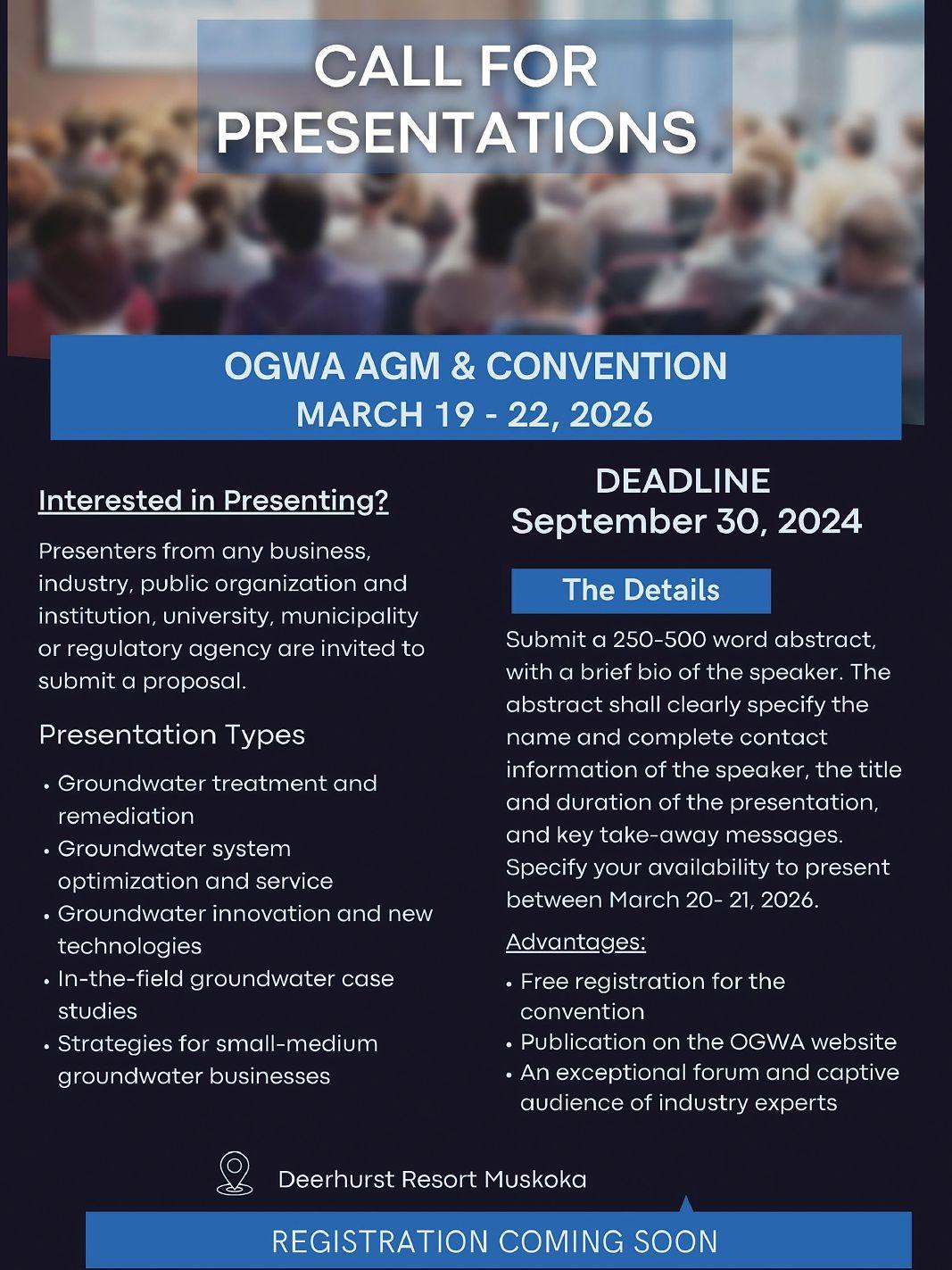
by Ken Hugo
Conventional wisdom states that during droughts many water sup plies are under stress and restric tions to water use is required, often at great sacrifice. Such has been the case in Alberta throughout its history. Recent droughts in the 21st century have shown that groundwater is a source of water that can supplement or even replace water under drought conditions, providing more use of groundwater and providing oppor tunities for the water well industry.
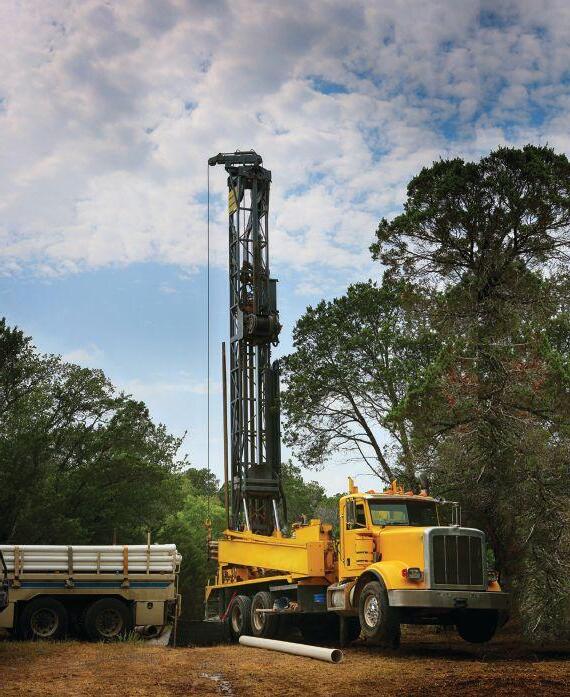
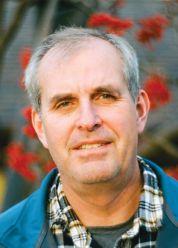
supplies are not directly connected to a surface water source, something that can be difficult to prove, but the general principle is based on solid scientific evidence. Our bedrock aquifers generally consist of geological formations of alternating sandstone aquifers with shale beds between the sandstone beds, and the surficial sediments often consist of low permeability till. As a result, a strong connection with surface water is not present.
Researchers, including the most recent Darcy lecturer (Dr. Grant Ferguson, University of Saskatchewan), have been able to show because of these low permeability units, the groundwater age of water in the deeper aquifers are on the order of hundreds to thousands of years old. These deeper bedrock aquifers are relatively uninfluenced by droughts – even ones that extend over years or perhaps (and hopefully not) decades.
Does that mean that we are mining these groundwaters and they are not sustainable? A case could be made for this, but groundwater aquifers in the area are not highly exploited.
Around the world, aquifer depletion is usually associated with crop irrigation which utilizes vast amounts of water. Alberta aquifers, whether fortunate or not, are generally not productive enough to provide the water quantities needed for irrigation.
Much of our groundwater can be elevated in sodium, sulphate and total dissolved solids, making the water unsuitable for irrigation.
Alberta has a network of observation wells, termed the Groundwater Observation Well Network (GOWN).
Water level data has been collected from 1,159 wells of which 306 are currently actively monitored. Examination of this data shows that the overwhelming number of aquifers are not going severe depletion.
Some wells adjacent to large users do show depletion, but most others show little depletion or even a rise in water levels.
Given the geographic size of Alberta and aquifers at several depths (ranging from gravels adjacent to rivers to wells more than 100 metres deep), the number of observation wells seems like a lot but often it seems that there is a paucity of data in a specific aquifer in a specific area.
Alberta Environment’s water well database also contains water levels when wells are first drilled and well measurement data when water well tests have been undertaken later during a baseline water well assessment conducted as part of oil and gas activities.
As a result, two data points at different time periods are present which allow for trends in aquifer levels to be observed. As with the GOWN network, little decline is generally observed.
With the overall favourable conditions for groundwater use, we have seen an increase in groundwater use.
Due to poor surface snowmelt runoff over the winter of 2023- 2024 and somewhat dry conditions during the summers of 2023 and 2024, several livestock watering dugouts have gone dry and a noticeable increase in the number of wells installed for livestock.
Our government recognizes that groundwater is an important and alternative water source during times of drought and has various grant programs in place to provide funds for wells.
In summary, while crop failure due to droughts generally cannot be alleviated by water from groundwater in most of Alberta, water wells and aquifers are capable of supplying water supplies for livestock, industrial, commercial and residential uses that serve as a drought-resilient source of water.
Ken Hugo is a technical rep with the Alberta Water Well Drilling Association
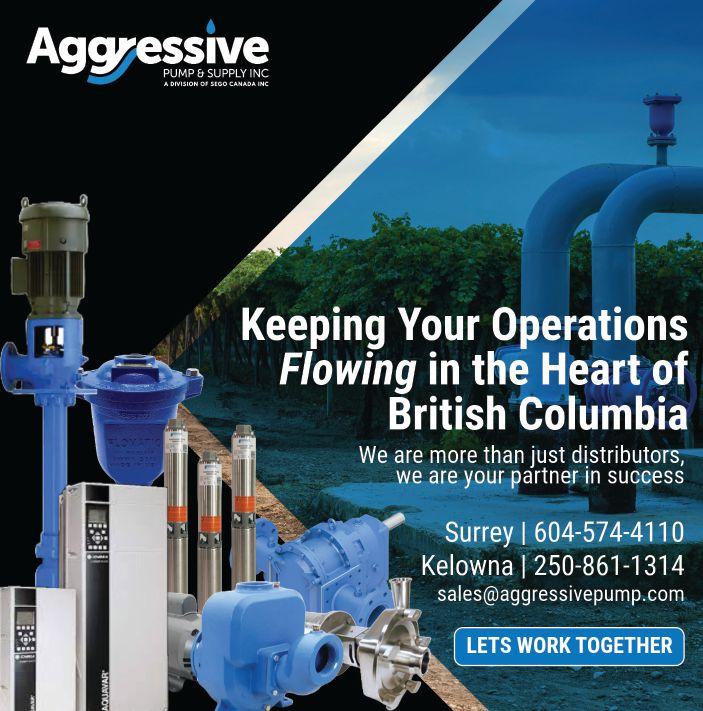

Indigenous leaders, scientists, government officials, community members and industry representatives recently gathered at Grasmere, B.C. for the “Without Water” Symposium on Yaqit ʔa·knuqⱡi’it First Nation territory where watershed values, knowledge and decision-making in southeast British Columbia were addressed.
by Living Lakes Canada
Attendees at the “Without Water” Symposium in Grasmere, B.C. listen to an educational presentation.
Throughout the day, more than 50 delegates discussed watershed challenges, including drought, pollution, and the uncertainty of climate change.
Yaqit ʔa·knuqⱡi’it Coun. Kyle Shottanana opened the event with a speech on the sacredness of water, and expressed powerful words during an interview on CBC’s Daybreak Kamloops.
“The necessity of water is in everything that we see,” Shottanana said during the interview. “Everything around us has to do with water, from the plants to the sky, and ʔa·kxamis qapi qapsin – all living things.”
The symposium intended to build relationships across sectors and worldviews, and explore how Indigenous, scientific, and local knowledge systems can inform watershed decision-making. Joseph Yellow Horn, environmental technician for the Piikani Nation in Alberta, attended the event and said it was good to see people come together for the environment.
“It’s really relieving to see that the environment is taking a forefront in a lot of discussions now,” he said. “We’re always taught ecological practices through our traditions and cultures, but it’s really nice and refreshing to go into groups of like-minded people.”
A key topic of the day was knowledge sharing and increasing the communication between groups to improve collective decision-making. Steve Fairbairn, mayor for the District of Elkford, expressed his worries about the future of water in his area and the need to break down barriers between different groups.
“More and more people are seeing concrete limits to water access and water volumes, as well as water quality; people are worried,” Mayor Fairbairn said. “People within silos have to be willing to share their information and know how to go about doing it, and people in different silos have to be willing to accept new information that doesn’t follow
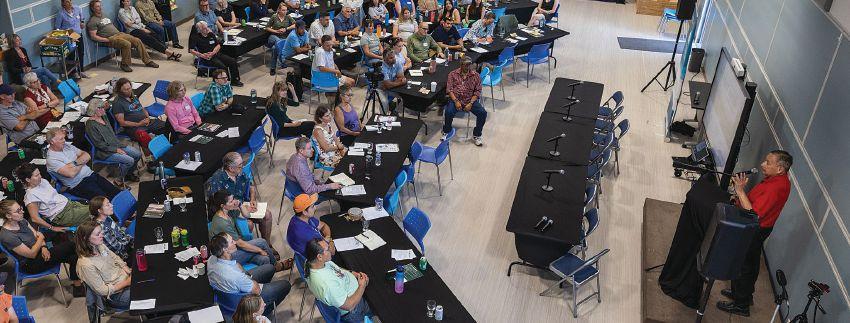
their perceived corporate or governance responsibilities.”
In the evening, 50 community members joined the daytime participants for a dinner, keynote speech, and a panel discussion. Grand Chief Stewart Phillip, the president of the Union of British Columbia Indian Chiefs, delivered a keynote on breaking down barriers, taking meaningful action, and creating a vision for a better future for the next generation.
“It’s absolutely worth fighting for to protect what we can protect, collectively,” he said, “but this movement is not a bystander movement, it’s not a polite movement. You have to show up, you have to speak out, and you gotta stand up, and we have to do it together.”
Following the keynote, a panel of representatives from Yaqit ʔa·knuqⱡi’it First Nation, local government, industry, scientists, and non-profits took to the stage to respond to community questions and concerns.
During the panel, Dr. Stewart Rood, University of Lethbridge professor of biol-
ogy and environmental science, summarized his learnings from the day.
“I would say, there were two points everyone agreed on – one: water is critical,” Rood said. “It’s critical to us, it’s critical to the environment, it’s critical to life. “And, two, water is threatened – locally threatened, globally threatened. And it’s interesting that the 10 speakers this morning from very different backgrounds – I think we all agree on those two points. Water is critical, water is threatened.”
Dr. Stella Swanson, study board member on the International Joint Commission for the Elk-Kootenai/y reference, participated in the evening panel discussion. She urged for taking decisive action to resolve water quality issues using known solutions –words that were met with impassioned applause from the audience.
“Just get on with it,” Swanson said. “Don’t dither, don’t make it into rocket science. It’s a lot of just basic chemistry, physics, and common sense.”
The “Without Water” Symposium was orga-
nized by Yaqit ʔa·knuqⱡi’it First Nation, Living Lakes Canada, and the Elk River Alliance on behalf of the Elk River Watershed Collaborative Monitoring Program. Organizers hope this collaborative model can inspire other watershed regions across the province. Strengthened collaborative local watershed governance is one of the provincial government’s commitments included in the BC NDP–Green Party Agreement in Principle.
Caitlin Henneker, the program manager for the Elk River Watershed Collaborative Monitoring Program, said that this event was a great example of collaborative partnership.
“This is the largest event that the Elk River Monitoring Collaborative has ever organized, and the first one that involved full collaboration between several partner organizations,” she said. “What we’re trying to build is a model where the best available resources are combined to achieve the maximum potential. We want people from different perspectives to come together and learn from each other.”
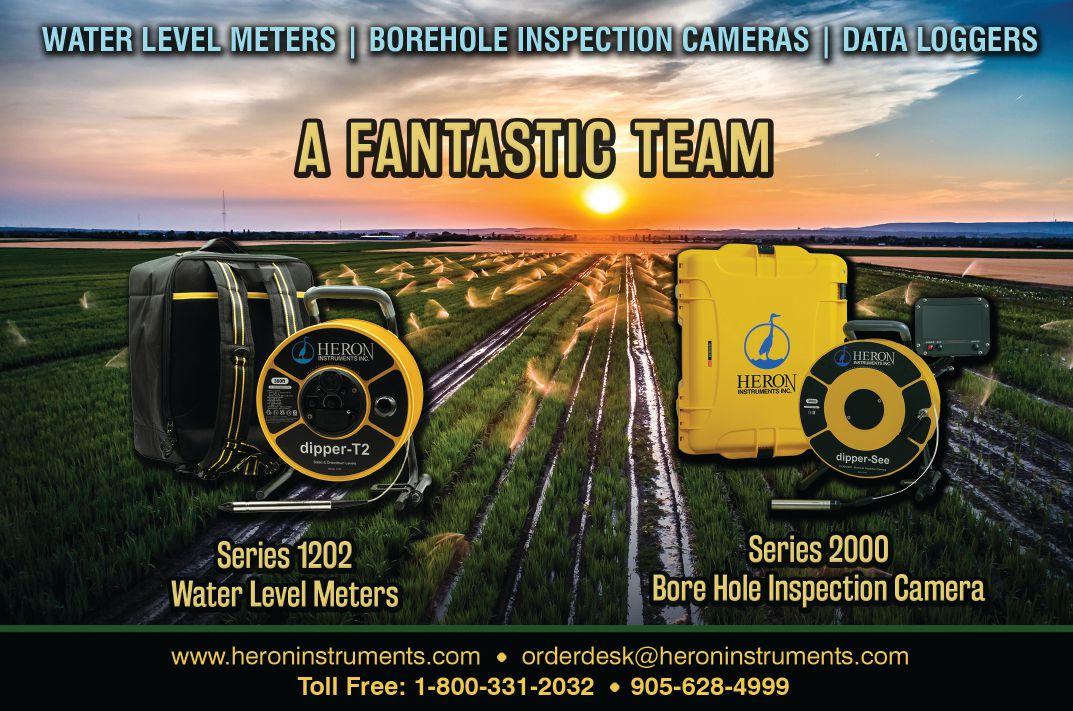
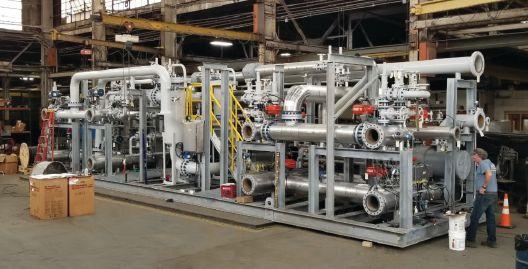
PSB Industries, a specialist in the design and fabrication of systems for dehydrating and purifying gasses and liquids, highlights its advanced line of moisture separators, engineered to provide moisture removal and enhance air and gas purity in wastewater treatment processes.
Developed for high efficiency and adaptability, PSB’s moisture separators cater to demanding requirements in the wastewater industry. Two primary models are featured –centrifugal separators and demister/mesh separators –each tailored to meet specific operational needs with minimal maintenance.
The centrifugal separator efficiently removes aerosols
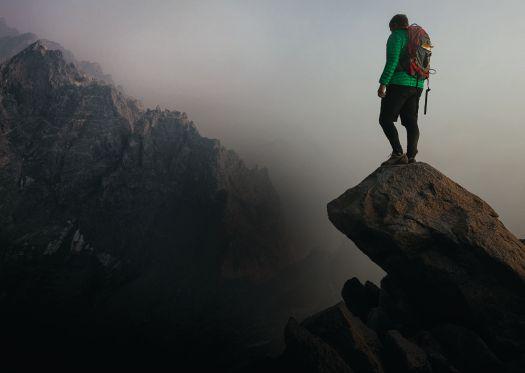
Introducing IAN GAWEL
Life and Health
Insurance Advisor
Mutual Fund Representative* 647-285-1390 ian.gawel@dfsin.ca
VINCE VIVONA
Life and Health Insurance Advisor Group Insurance Advisor 416-571-6568 vince.vivona@dfsin.ca
as your new member benefit partners, approved by Ontario Groundwater Association, for the following financial services:
• Group Benefits Plans
• Group Pension Plans
• Business Owner Financial Services
• Individual Employee Financial Services
WE LOOK FORWARD TO MEETING WITH YOU AND DISCUSSING EACH OF YOUR SPECIFIC NEEDS.


down to 10 microns, making it an ideal choice for highvelocity gas flows wastewater aeration systems. Designed with durability in mind, it requires no replacement of internal components, which reduces downtime and cuts maintenance costs. This separator is optimized for applications that demand high throughput without compromising air and gas purity.
For wastewater treatment applications requiring precision at lower flow rates, the demister/mesh separator offers flexible filtration down to 0.3 microns, supported by an internal mesh that can be configured as permanent or replaceable. Its turndown capabilities ensure it maintains peak efficiency across varying operating conditions, making it a versatile choice for different stages of wastewater treatment and sludge processing.
PSB’s moisture separators ensure efficient moisture removal, helping wastewater treatment facilities maintain cleaner, high-quality air and gas outputs essential for critical water reclamation processes. psbindustries.com
Franklin Electric has added more field-ready options to its SubDrive variable frequency drives (VFDs). The new SubDrive QuickPAK and SubDrive Connect Plus products and enhanced SubDrive Connect Plus connectivity features are designed to meet a wider range of installer and market needs.
“We designed SubDrive products as easy-to-install solutions to upgrade traditional jobs and get the best performance out of pumping systems,” Terry Smith, senior product manager – small drives & electronics, Franklin Electric, said. “We’re excited to advance our offering with new options that help water professionals tackle more jobs with Franklin Electric’s reliability and support.”
The following are additions to the lineup:
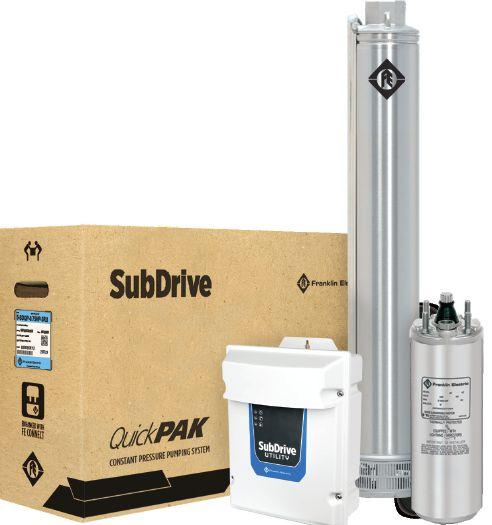
SubDrive QuickPAK Constant Pressure Package – now with SubDrive Utility VFD option. The SubDrive QuickPAK is a system-solution package that simplifies the installation of a constant-pressure system. Installers can choose a package that includes a SubDrive Utility VFD for three-phase systems from 0.5 to two horsepower, covering flows from five to 25 GPM.
SubDrive Connect Plus –now with lower-horsepower options. The SubDrive Connect Plus VFD is engineered to provide a simple, powerful constantpressure solution for waterpumping systems. Franklin Electric is adding more lowerhorsepower options to the lineup, including 460V, five and 7.5 horsepower models.
SubDrive Connect Plus – now with enhanced
connectivity. All SubDrive Connect Plus models now feature the latest in connectivity and support. It features seamless integration into SCADA and automation systems using Modbus RTU for remote communication and control. Users can unlock this feature on existing drives by updating the product to the latest firmware Version 1.13.0 using the FE Connect mobile app.
The new FE Connect Oneto-One feature allows for live, over-the-air technical support and real-time sharing of a system’s conditions with offsite technical support teams, including Franklin Electric’s experts. The feature works via the FE Connect app and will be available on other Franklin Electric app-supported products. franklinwater.com/subdrive
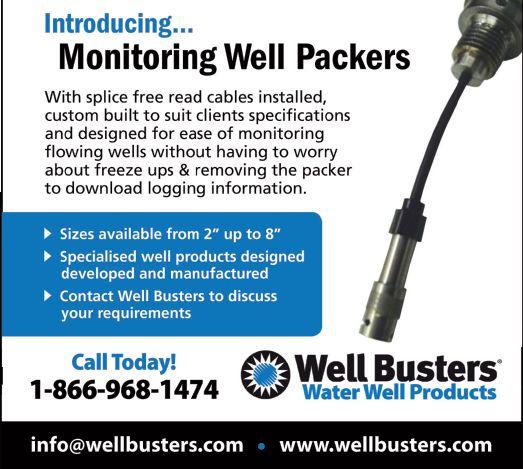
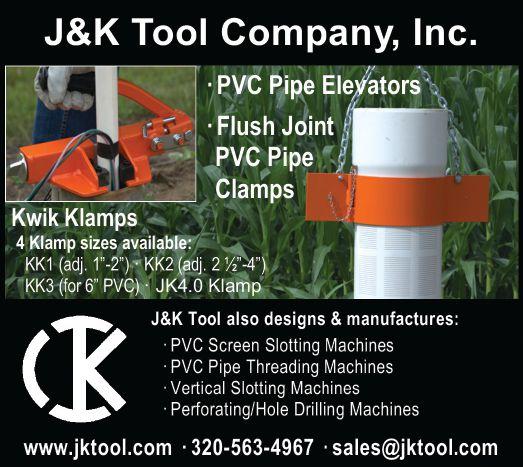

by Living Lakes Canada
ith 31 water shortage advisories in effect across Alberta as of Aug. 18, 2025, water security remains a pressing concern despite above-normal summer rain in southern regions. In watersheds such as the Oldman, forecasts range from average to much belowaverage water supply, and years of severe drought have heightened these concerns.
In recent community meetings and a public survey focused on groundwater, southern Alberta residents voiced their priorities around understanding and protecting this vital freshwater source.
Co-led by Living Lakes Canada and the Oldman Watershed Council, in collaboration with the Piikani Nation Lands Department, the Alberta Groundwater Program aims to build a community-based monitoring network to strengthen groundwater management and support sustainable water use. The initiative blends Western science with local knowledge, both Indigenous and non-Indigenous, to help identify priority locations for monitoring.
Community engagement is at the heart of the program. In spring 2025, three public meetings were held in Pincher Creek, Lethbridge, and online, complemented by an online survey to gather broader input. The program also engaged with the Piikani Nation community to better understand local priorities and concerns. Participants represented a range of backgrounds and sectors, including educators and non-profit workers, agriculture and land use managers, Indigenous leaders, and local government.
The feedback revealed strong, regionwide concern about groundwater. More
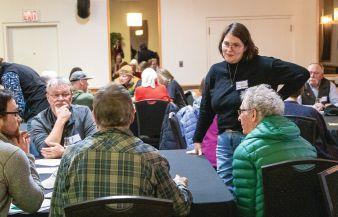
than 70 per cent of survey respondents said they are “very concerned” about groundwater in Alberta, and a combined 97 per cent said improving understanding of groundwater is either “very important” or “important.”
Top concerns from both the meetings and survey included drinking water access, contamination risks from industry (such as oil, gas and mining), water use for irrigation and livestock, and ecosystem health.
“We are in a drought cycle,” one participant said. “There is very little snowpack in the mountains to recharge the groundwater, possibly affecting our only water source. As a primary producer, water is essential for our animals, household and gardens.”
Meeting participants were invited to mark
locations of concern on watershed maps. Hotspot areas of concern include Pincher Creek, Crowsnest Pass, Lethbridge, and extend through other communities such as Stavely, Vulcan, Cardston, and Twin Butte.
“Our community has minimal information on groundwater availability to support our long-term community needs,” another participant said.
Lethbridge based Anne-Marie Lefebvre, Living Lakes Canada’s Alberta groundwater program co-ordinator, emphasized the local commitment to water stewardship: “People in this region are deeply passionate about safeguarding water for future generations. Ranchers, farmers, and entire communities’ livelihoods depend upon a reliable and secure water supply. This project helps to link science and community water security needs and priorities for the long-term.”
Based on the input received through the public engagement process, Living Lakes Canada and the Oldman Watershed Council is developing a shortlist of monitoring well sites using both community-identified priorities and scientific criteria, including findings from the aquifer vulnerability assessment and data gap analysis. Final site selection is expected in late summer or early fall 2025, followed by the launch of monitoring and community workshops.
